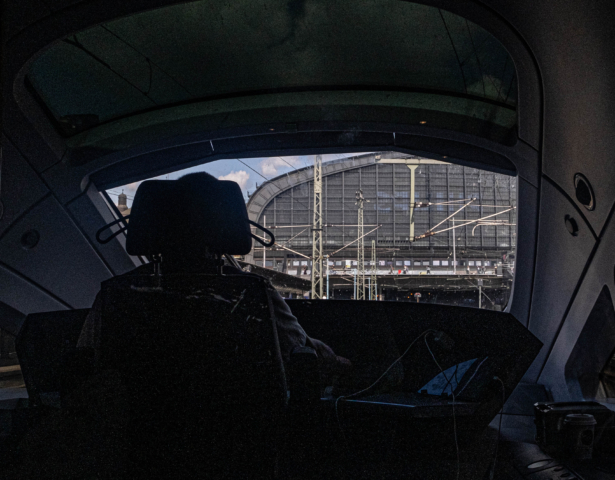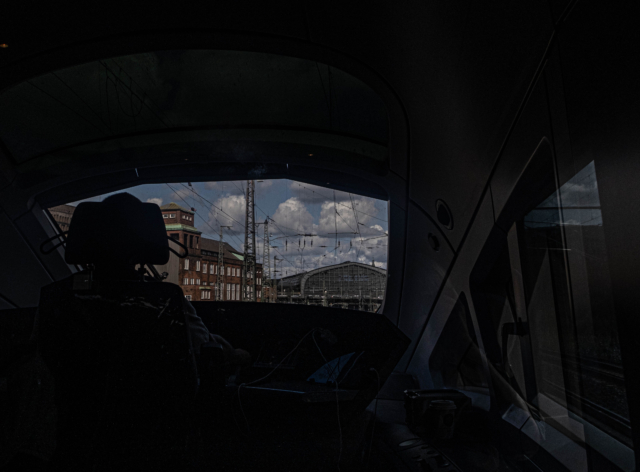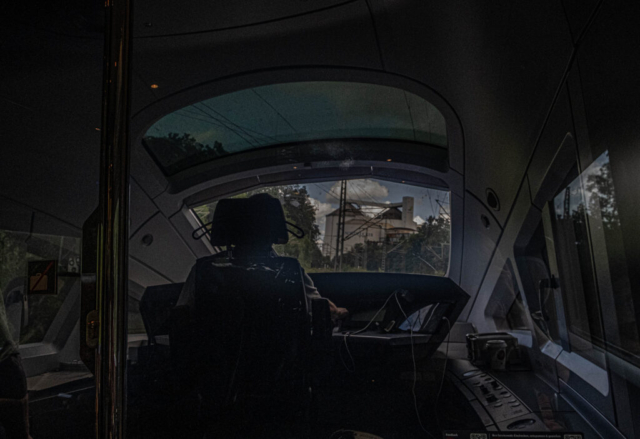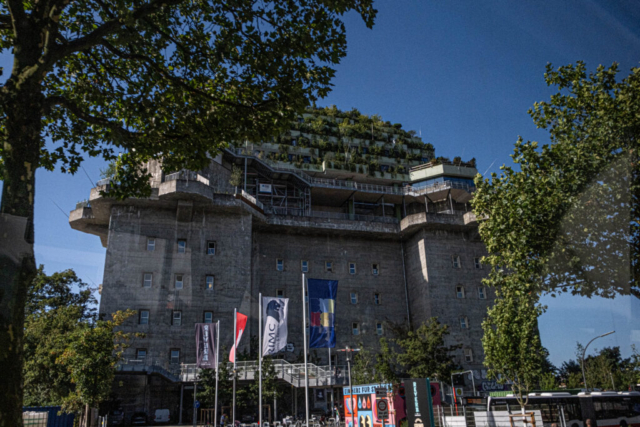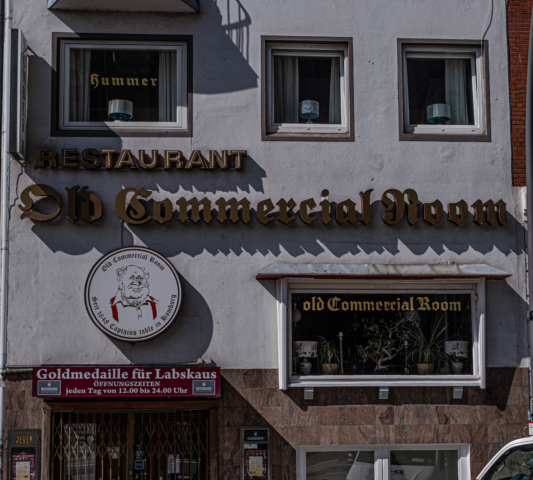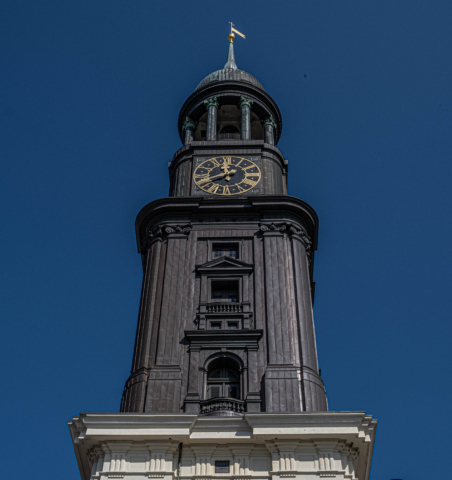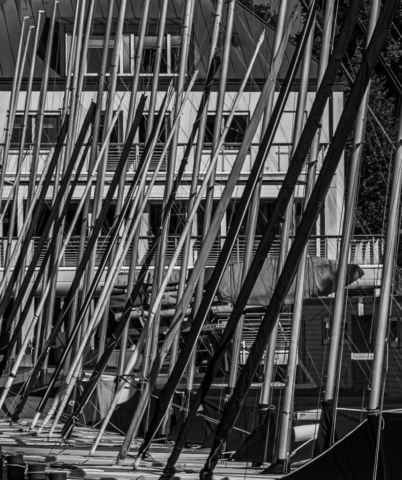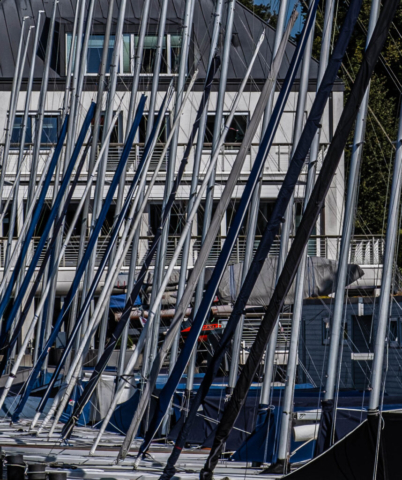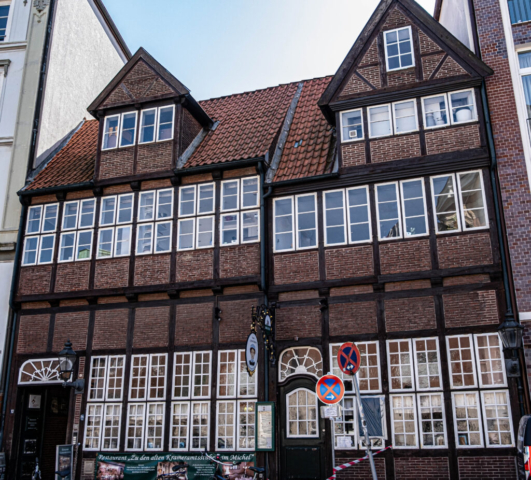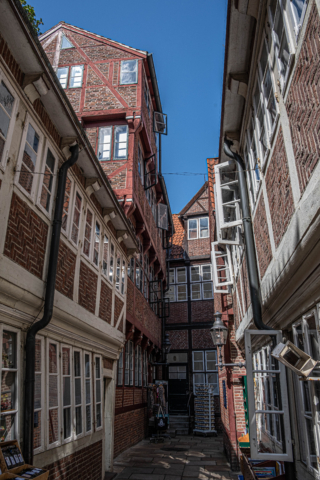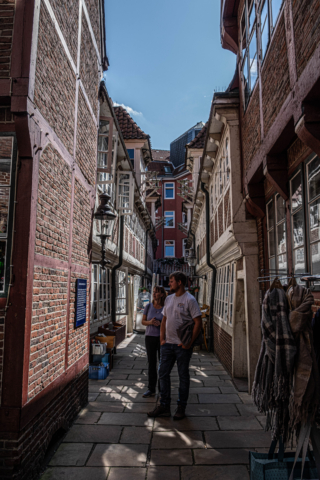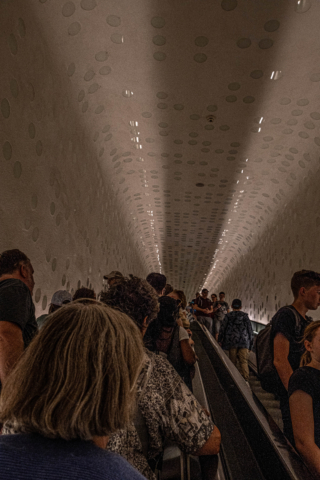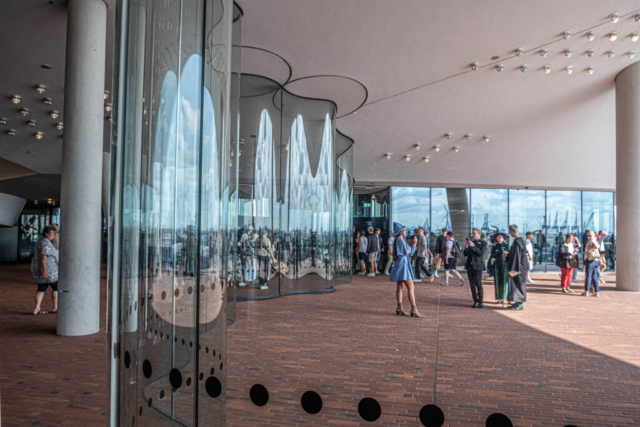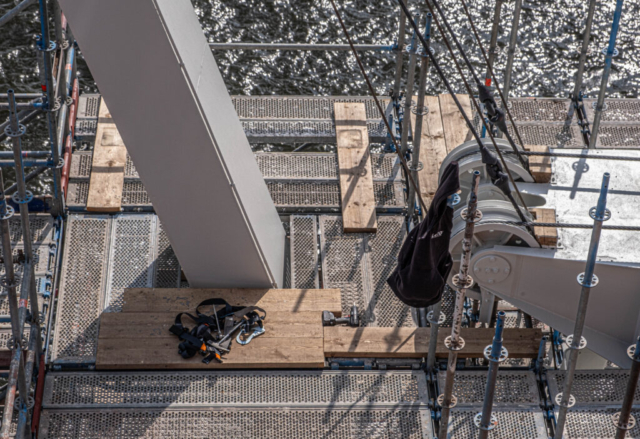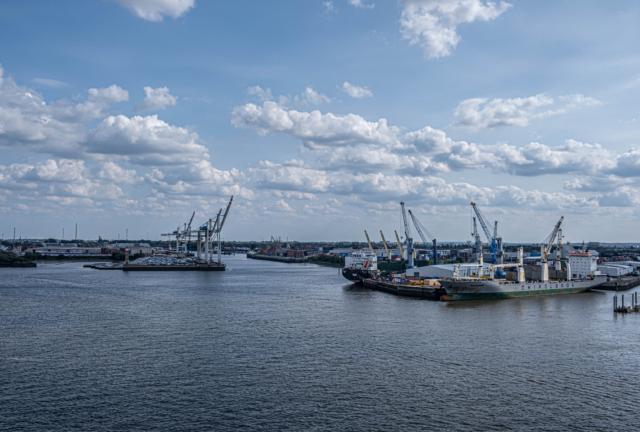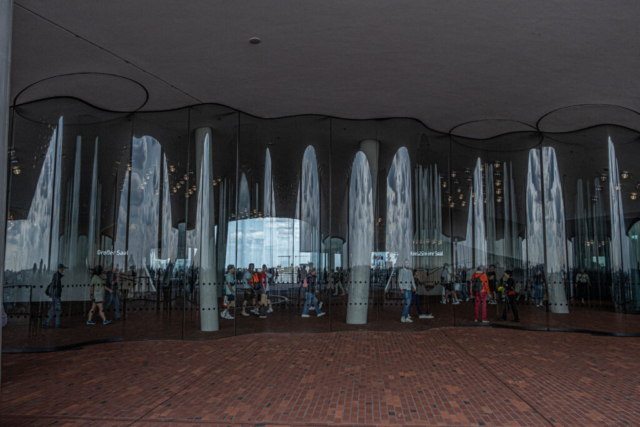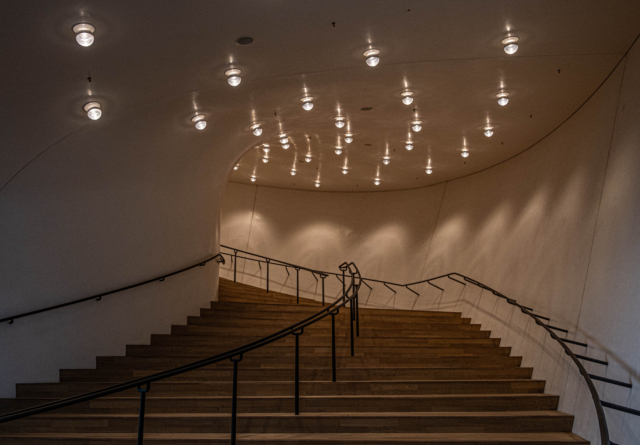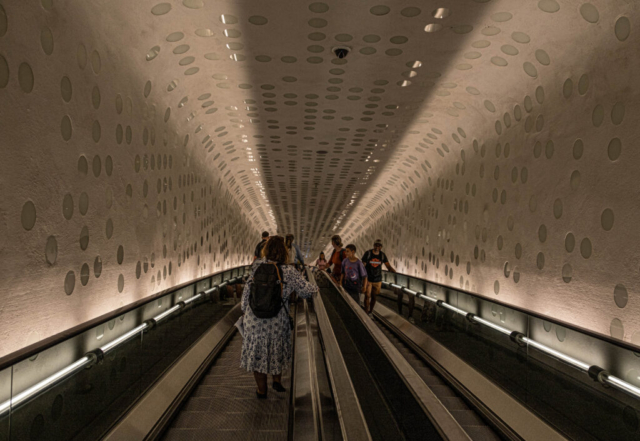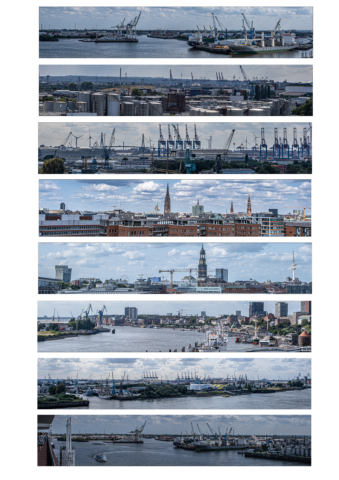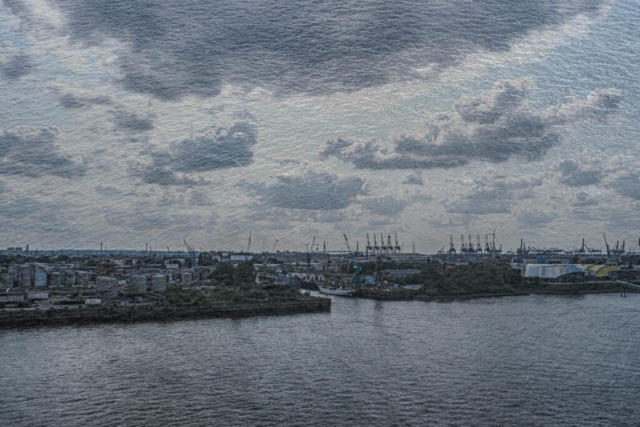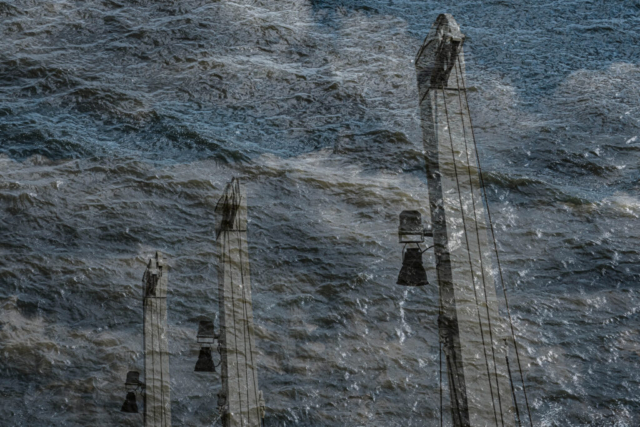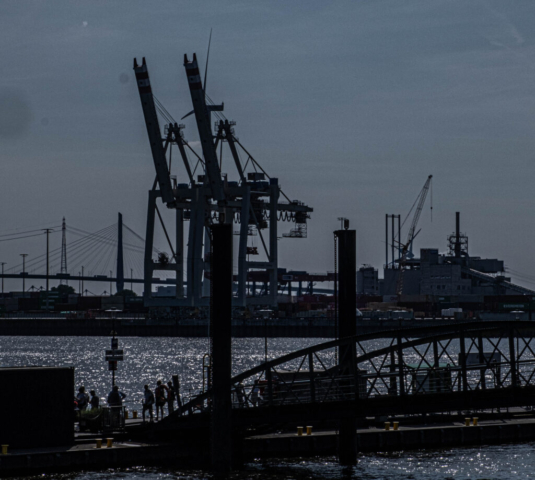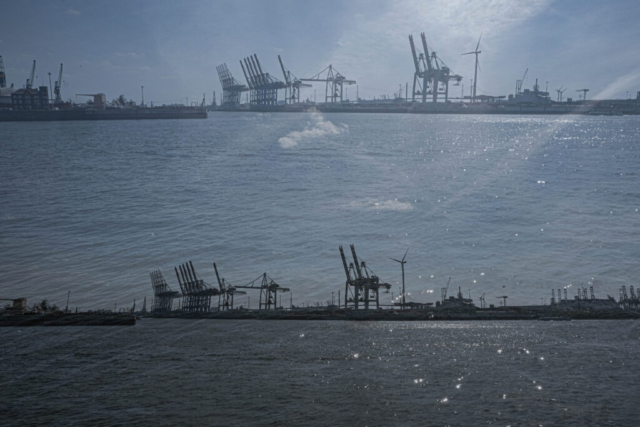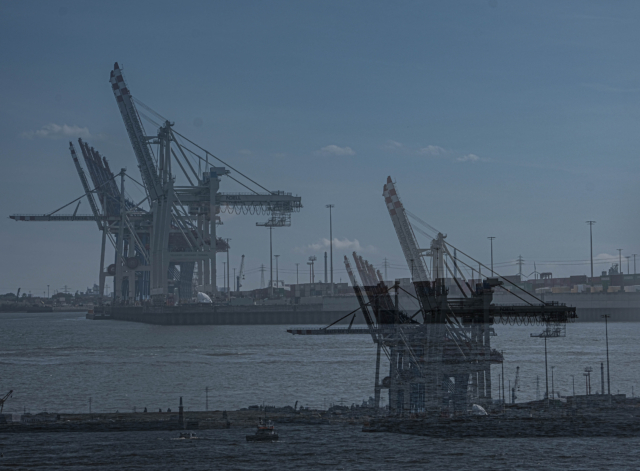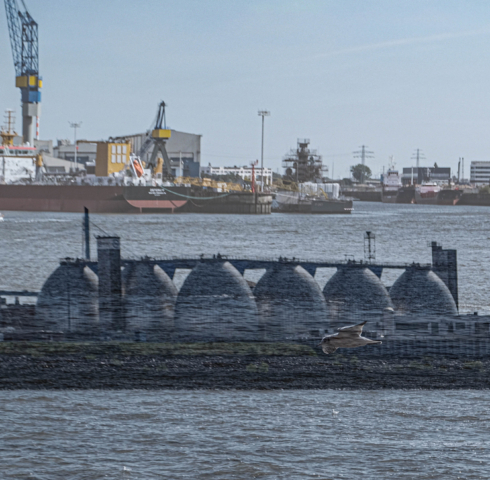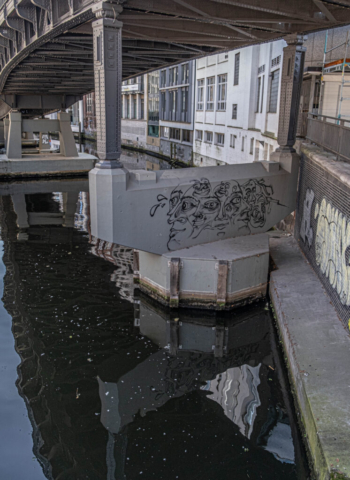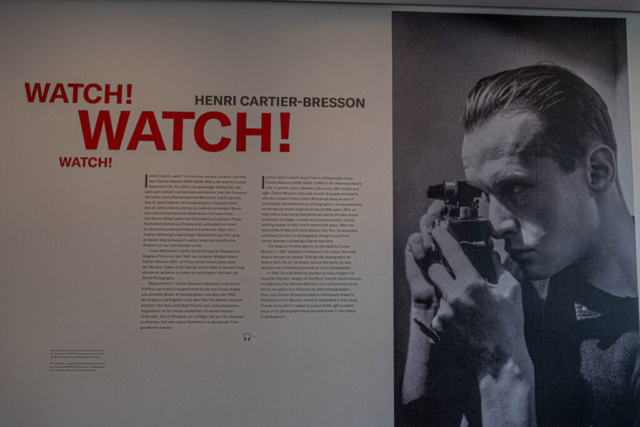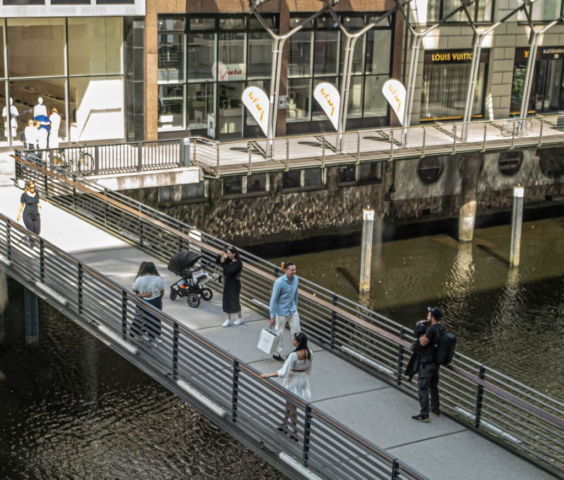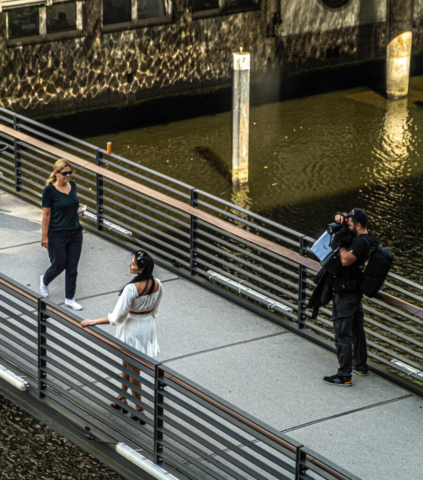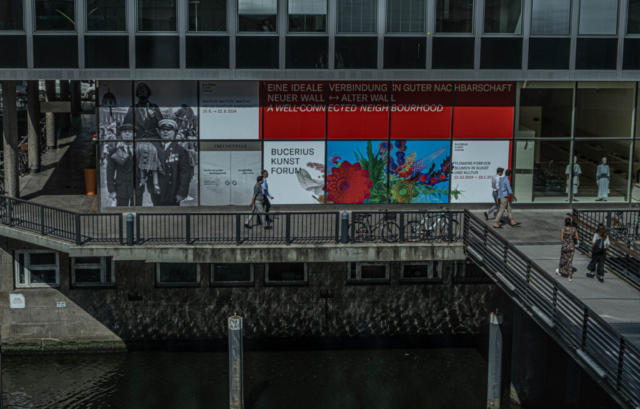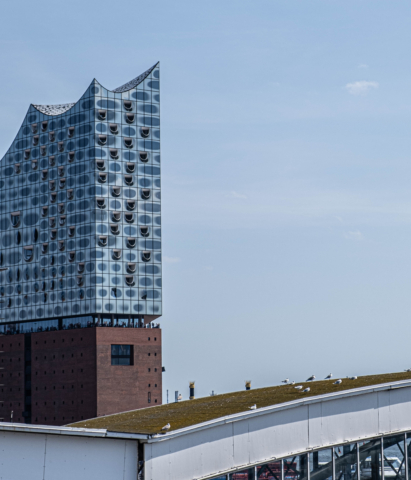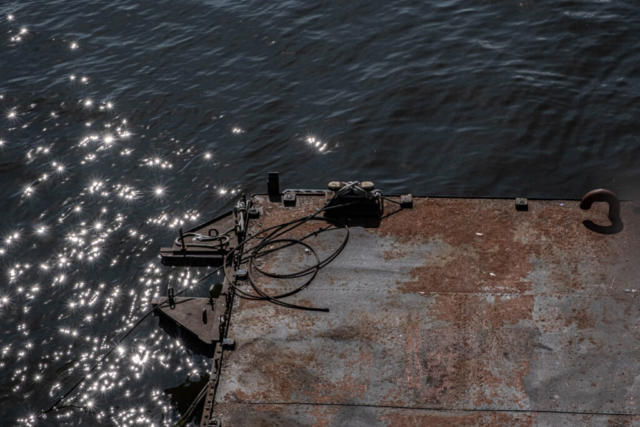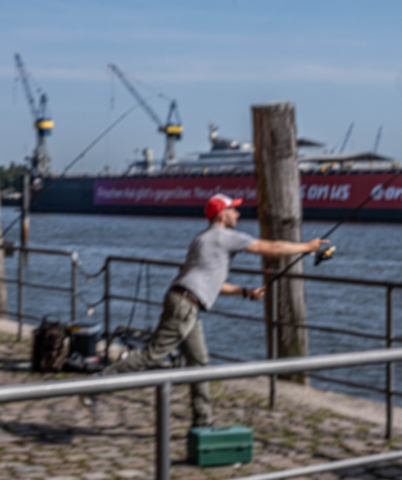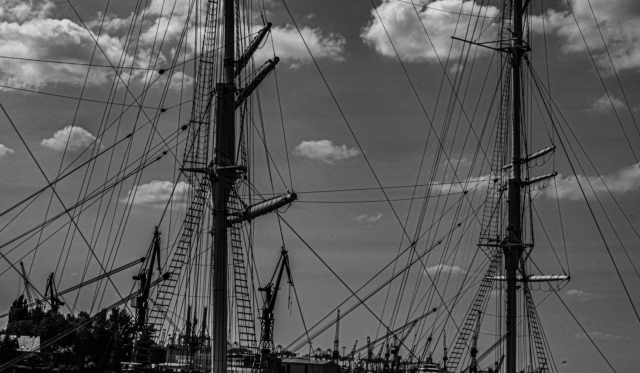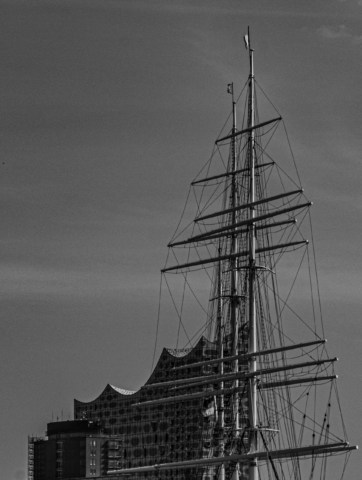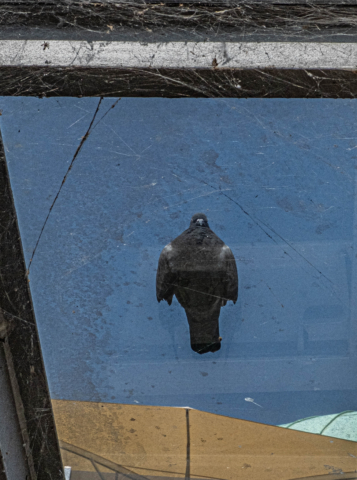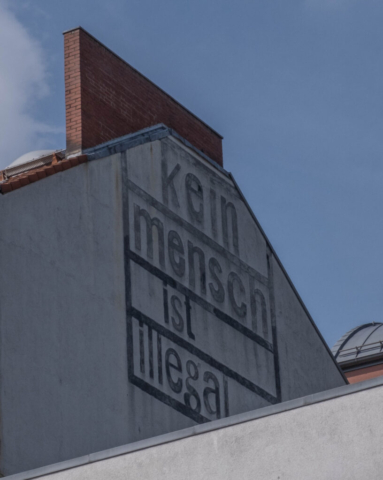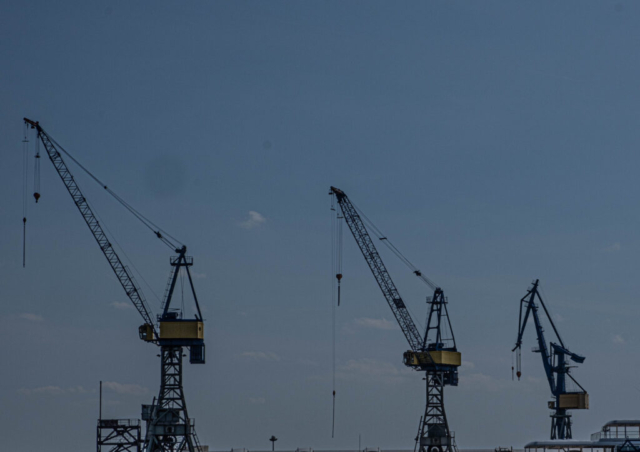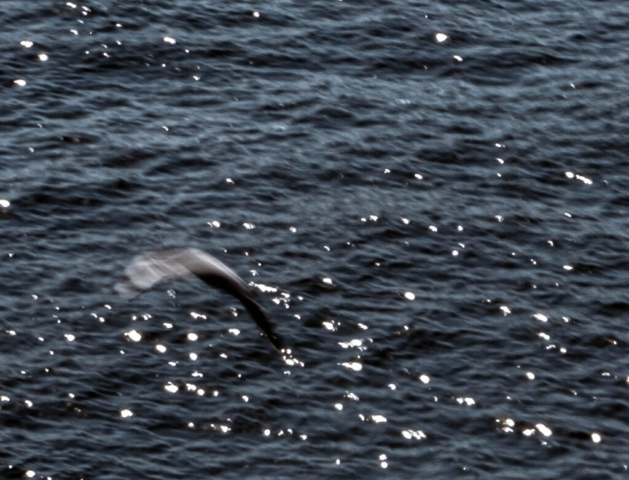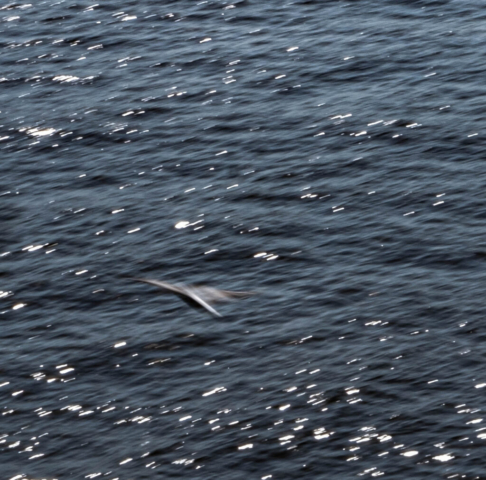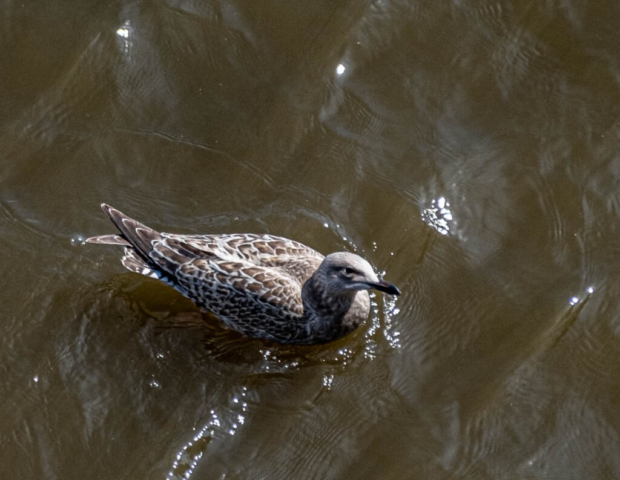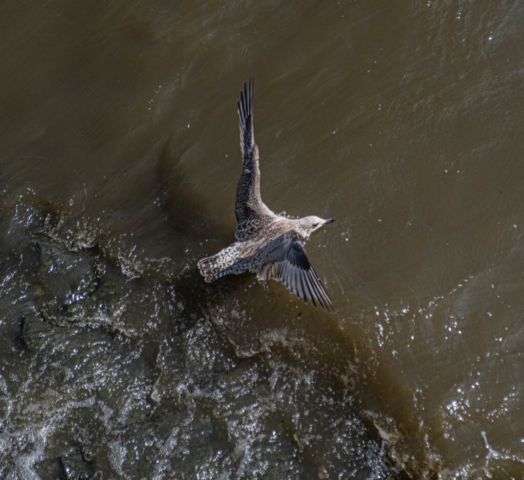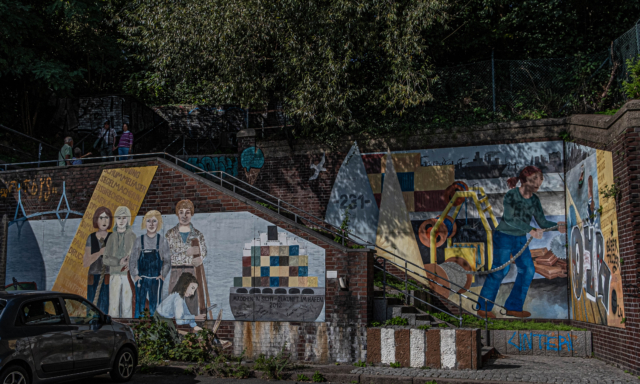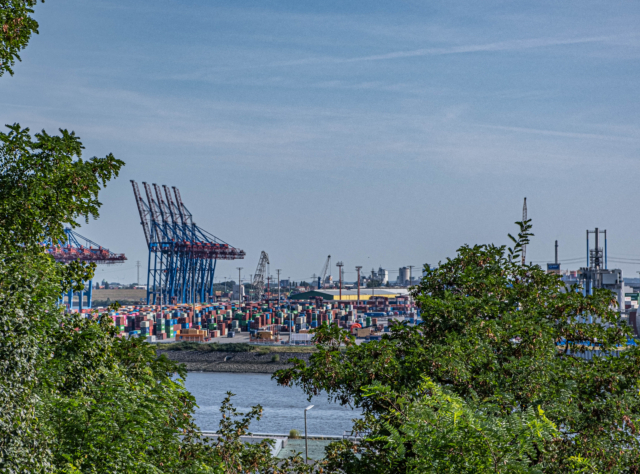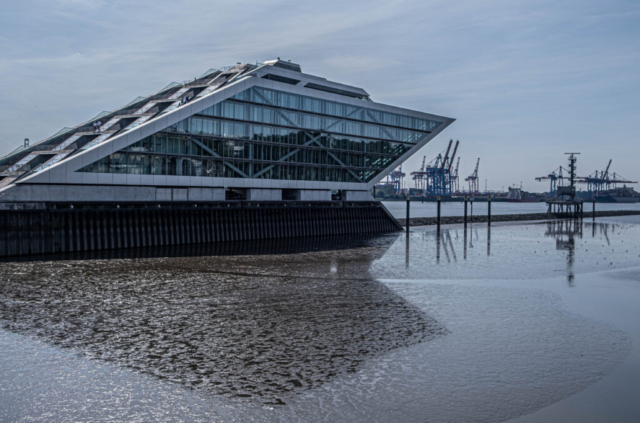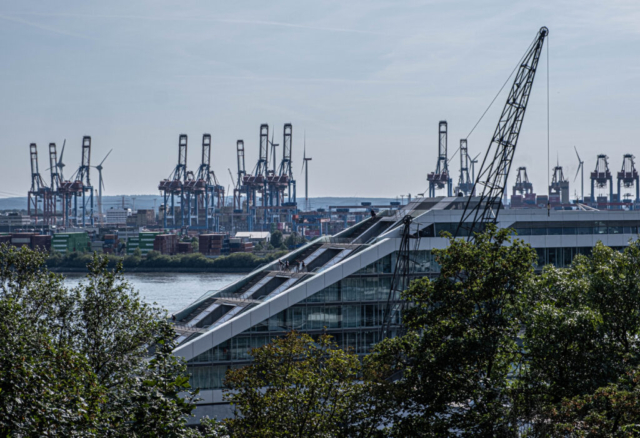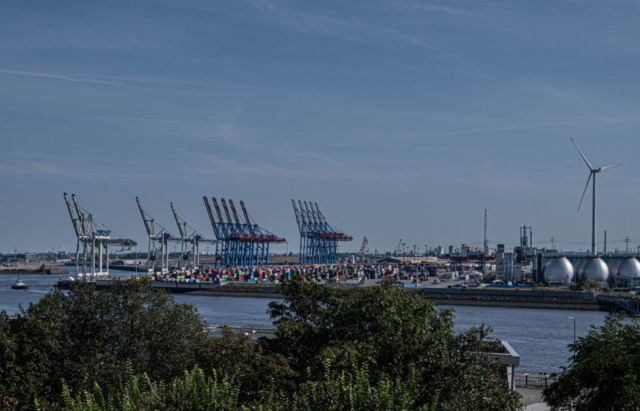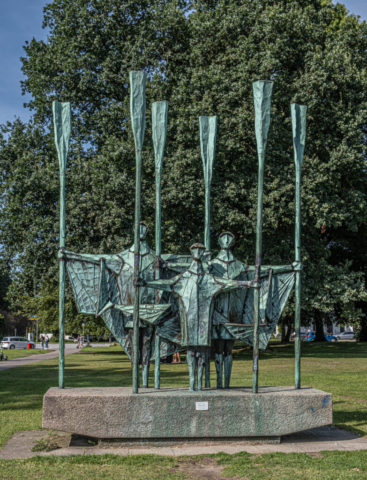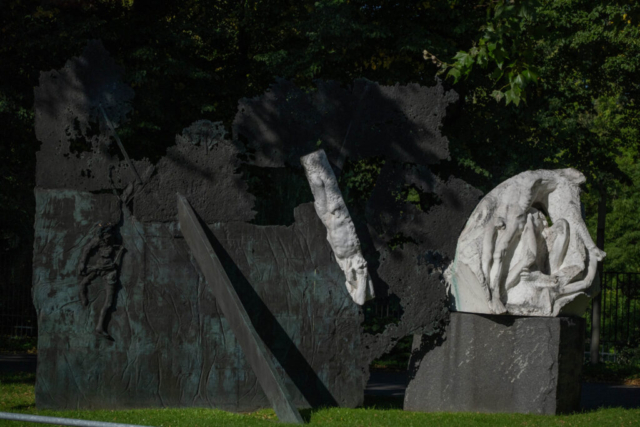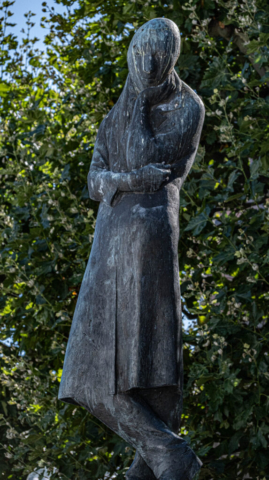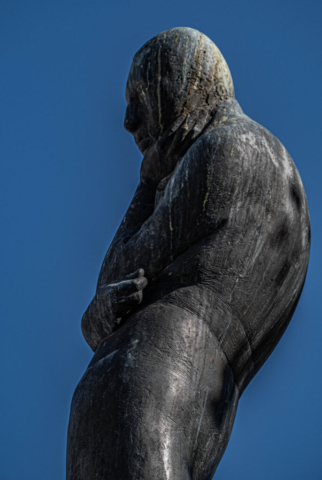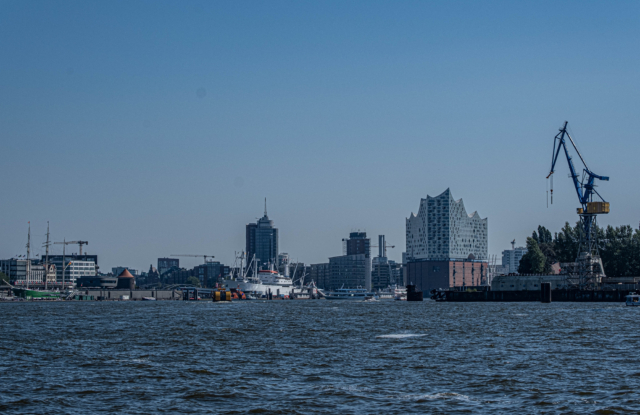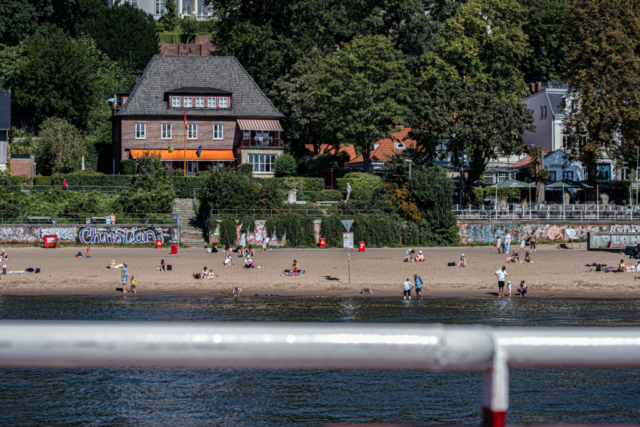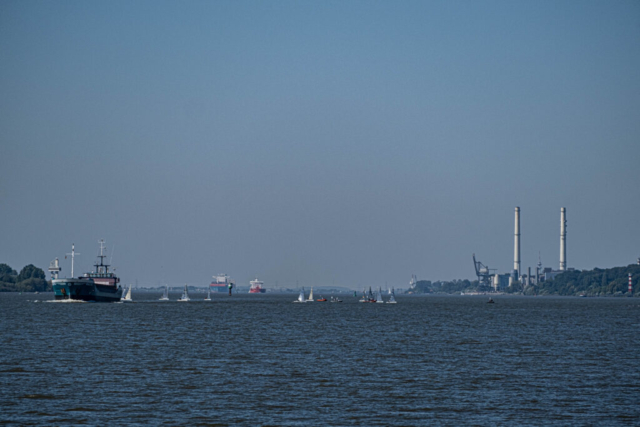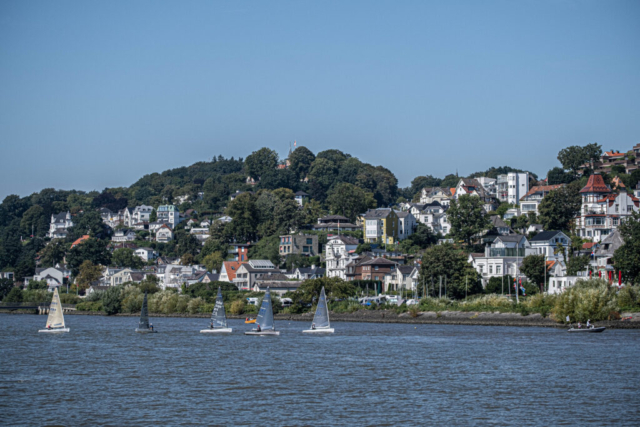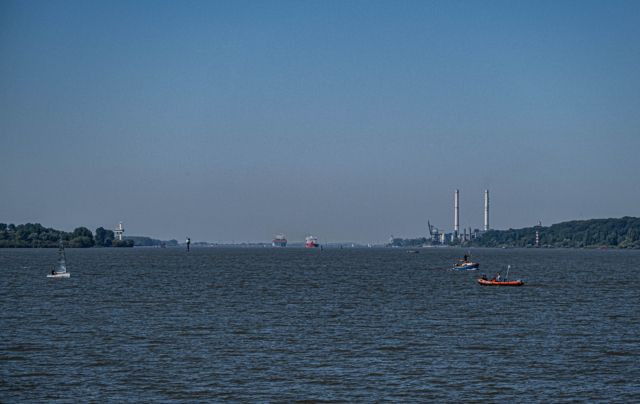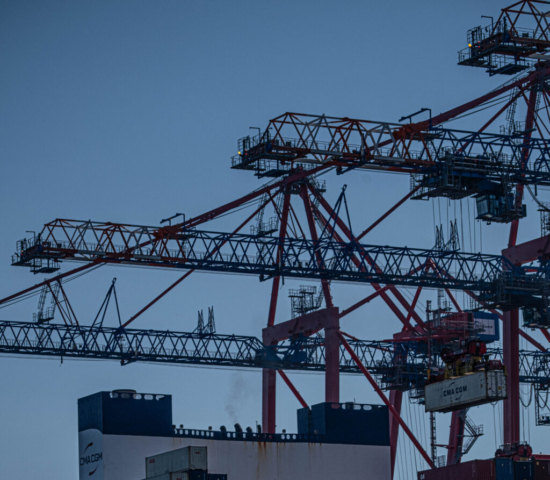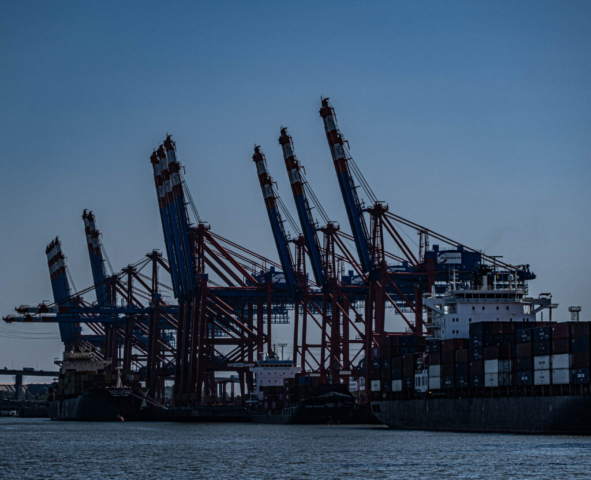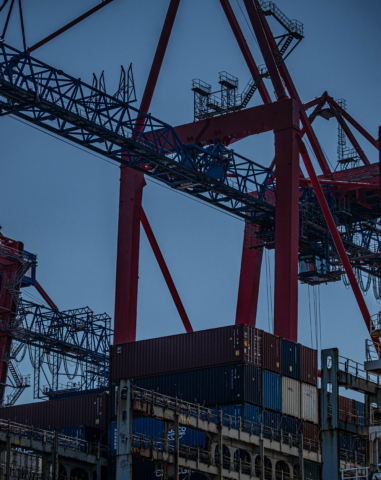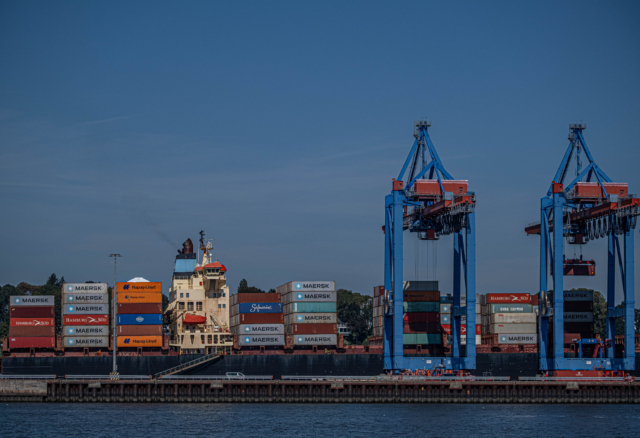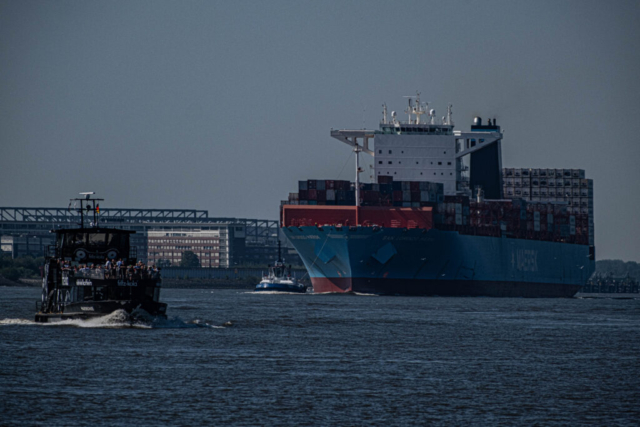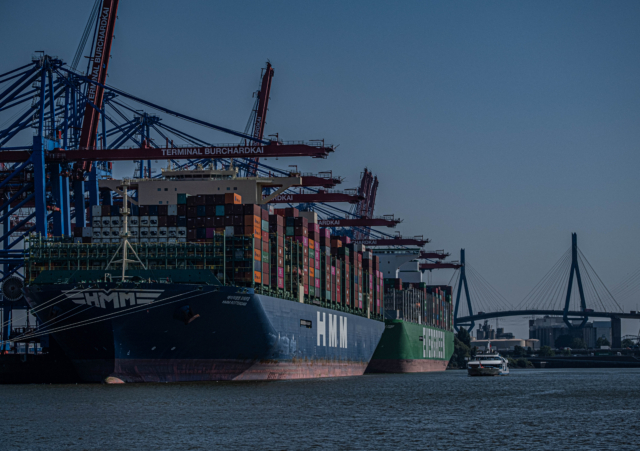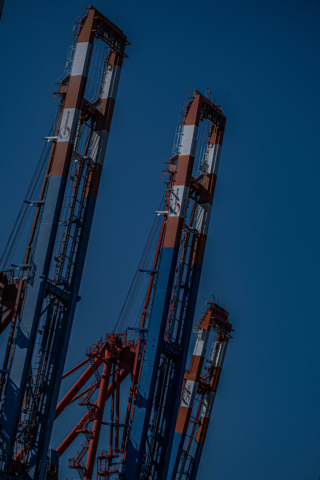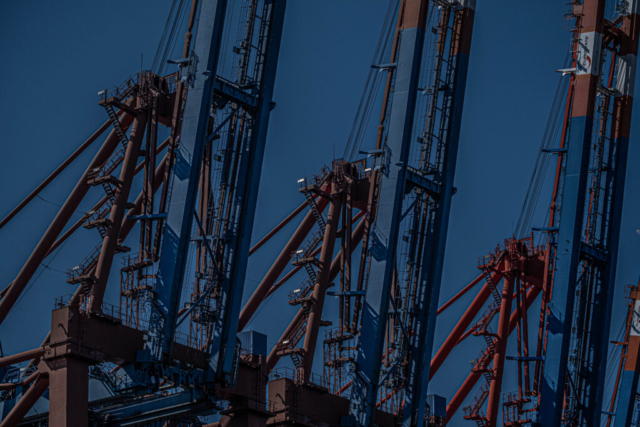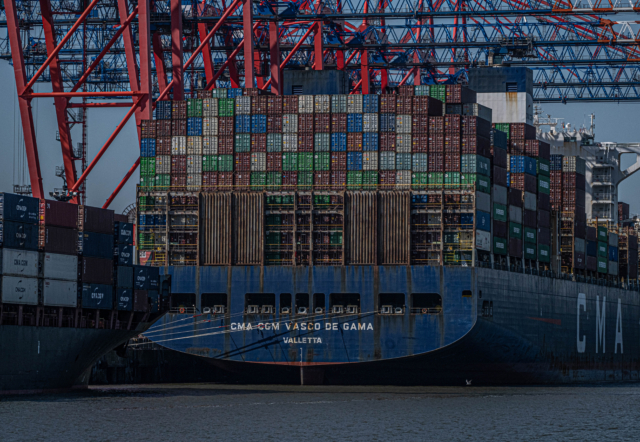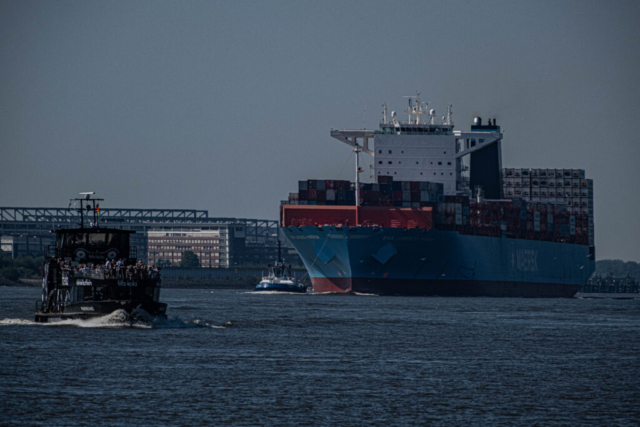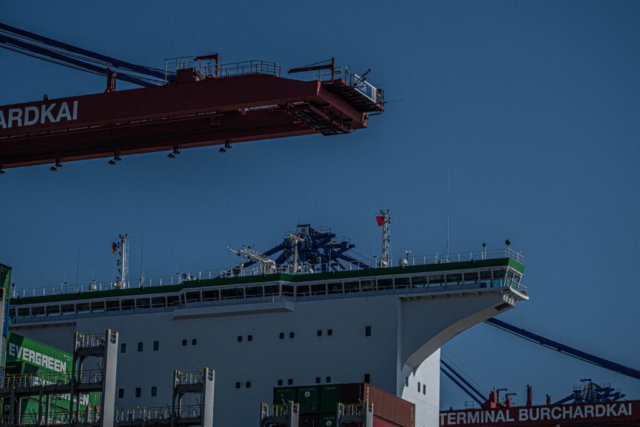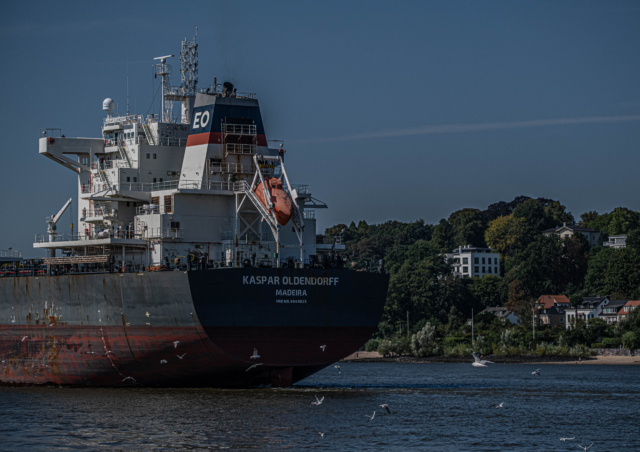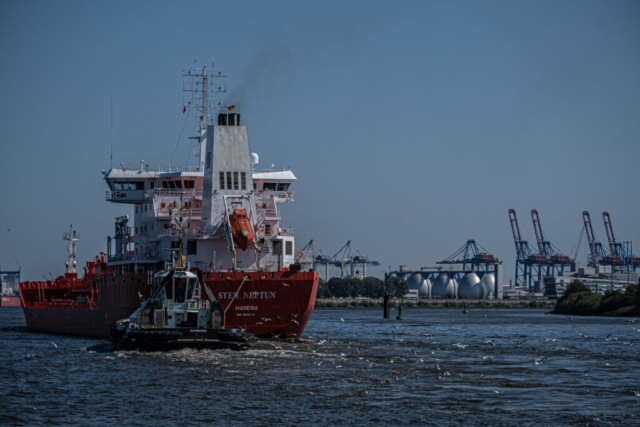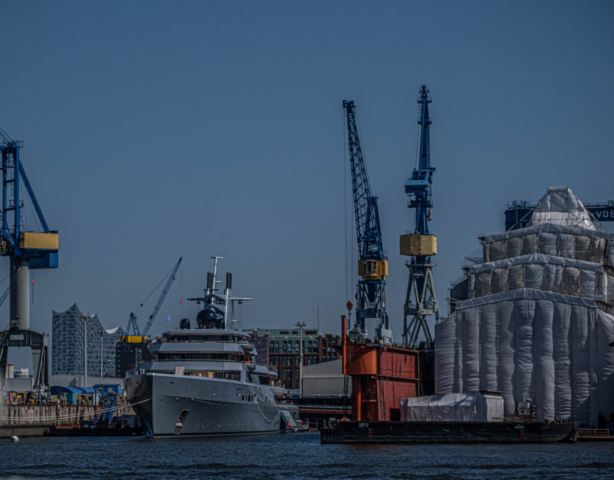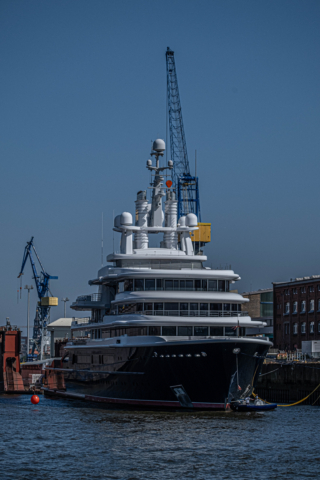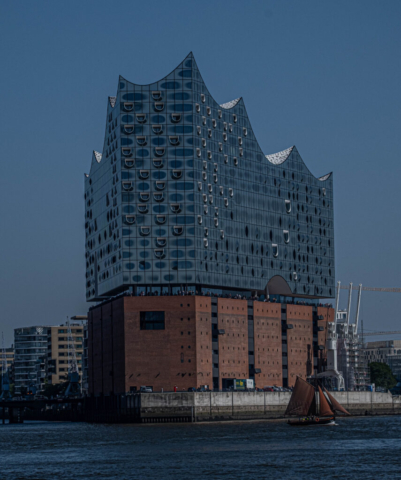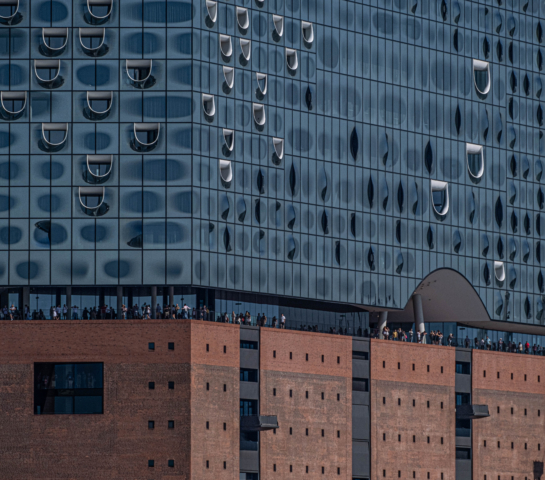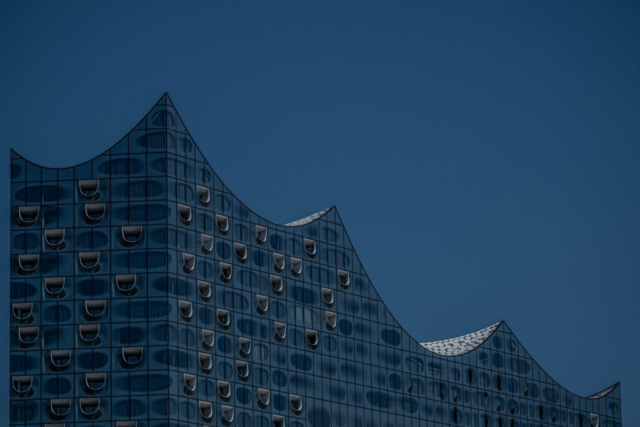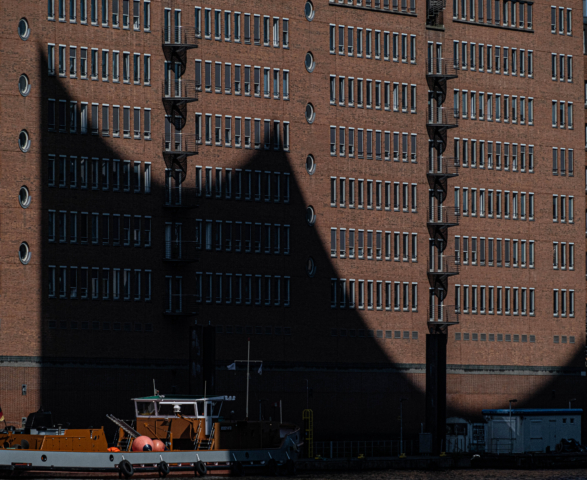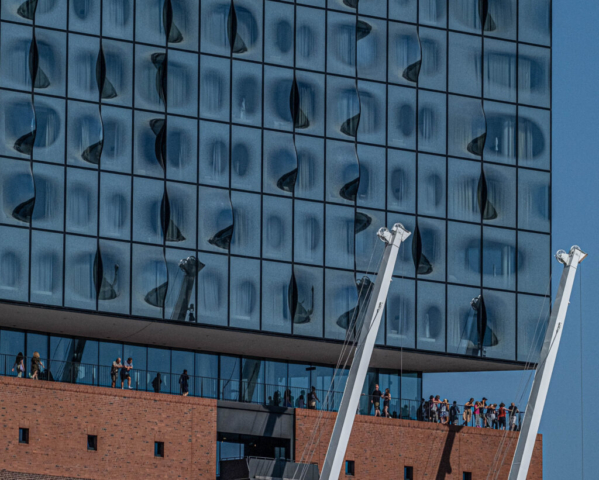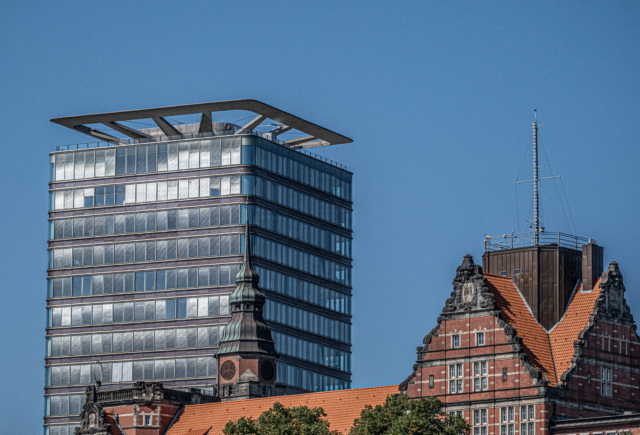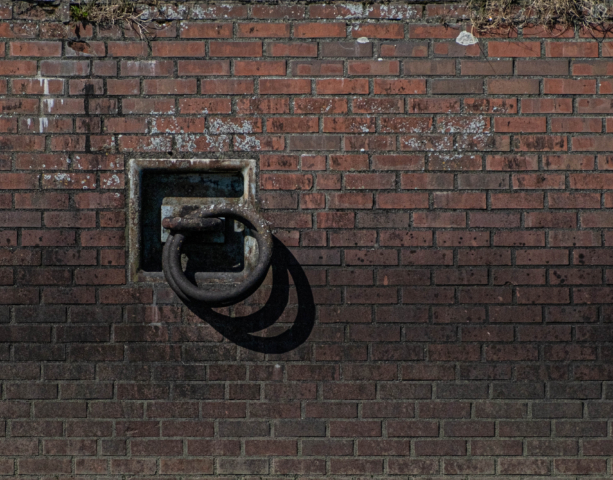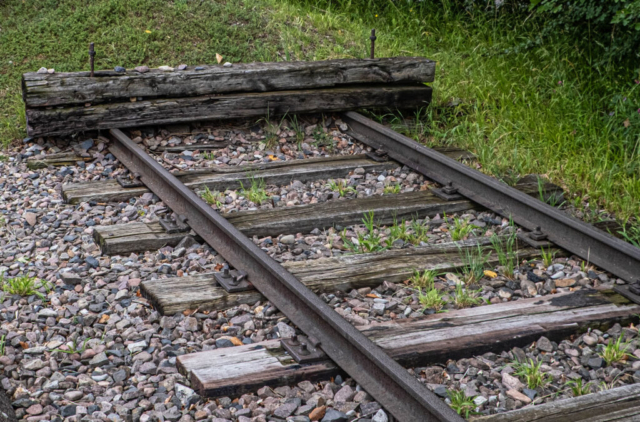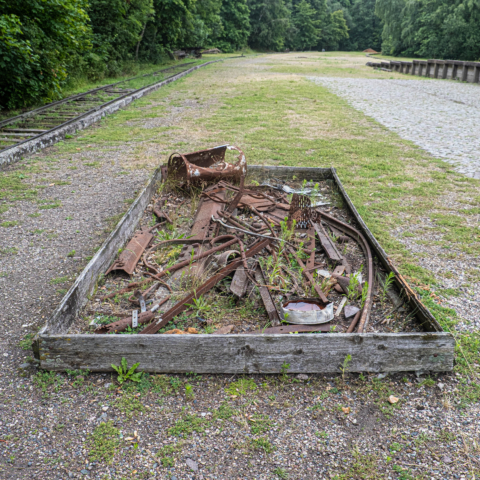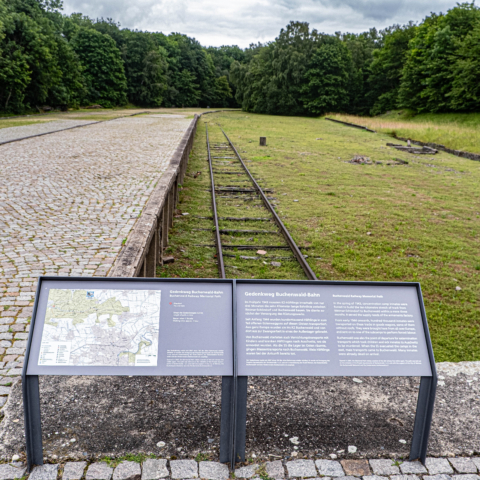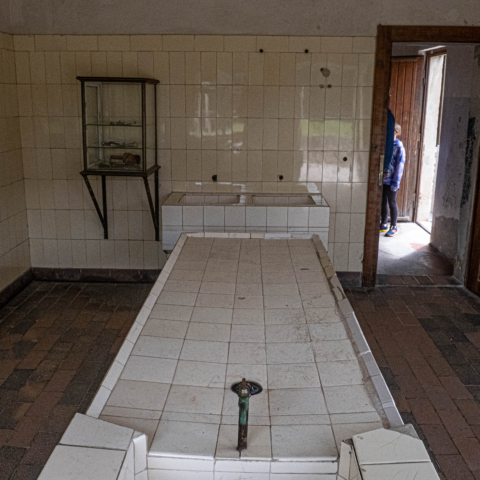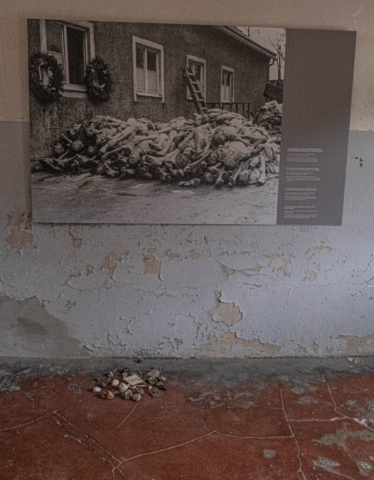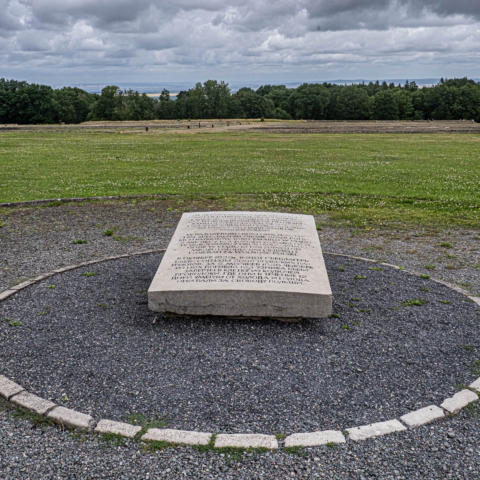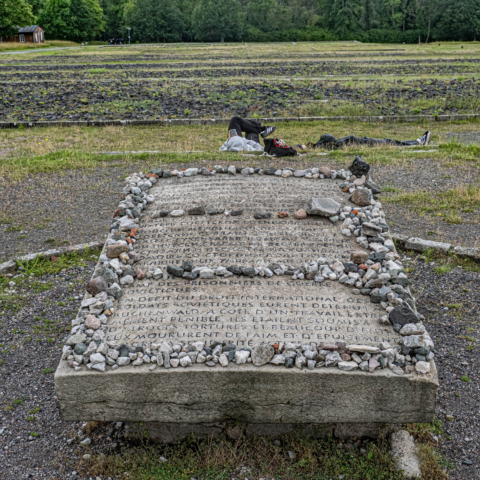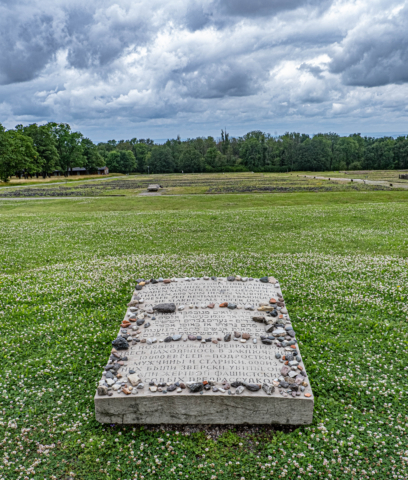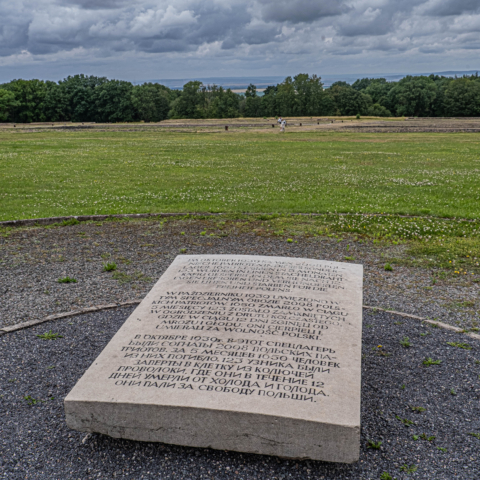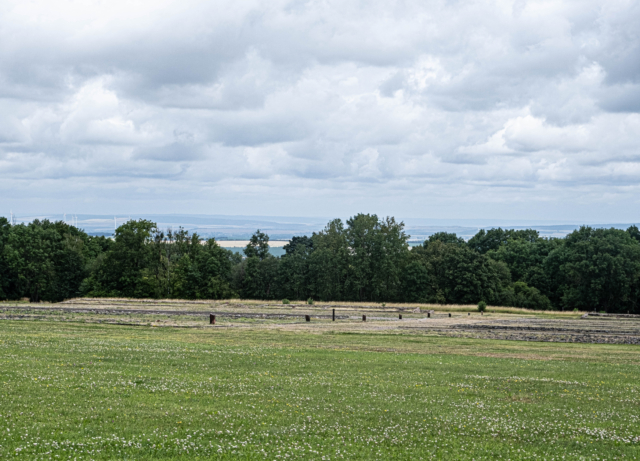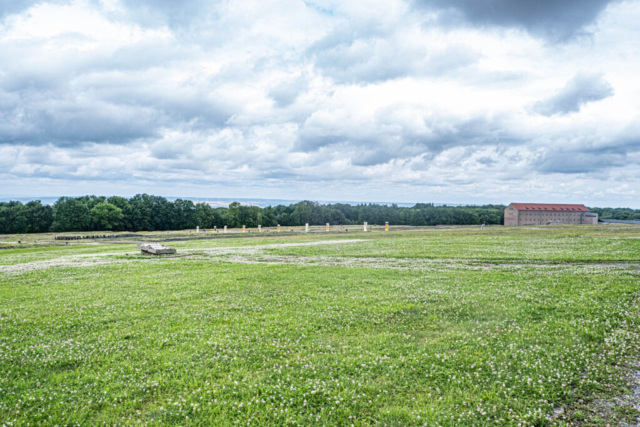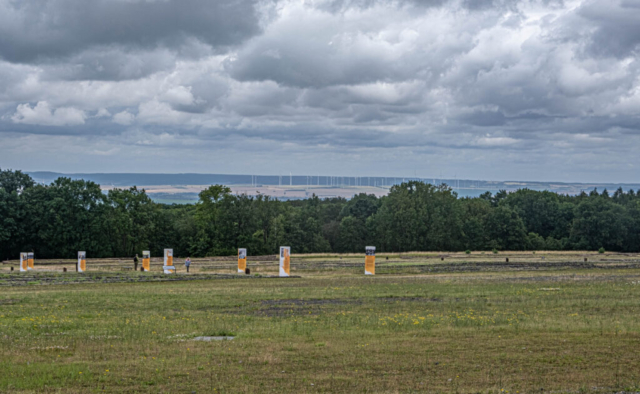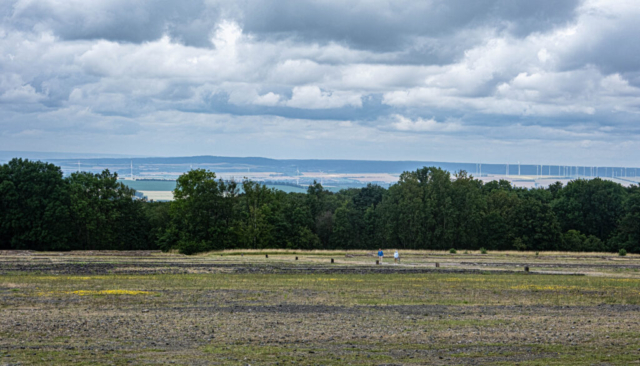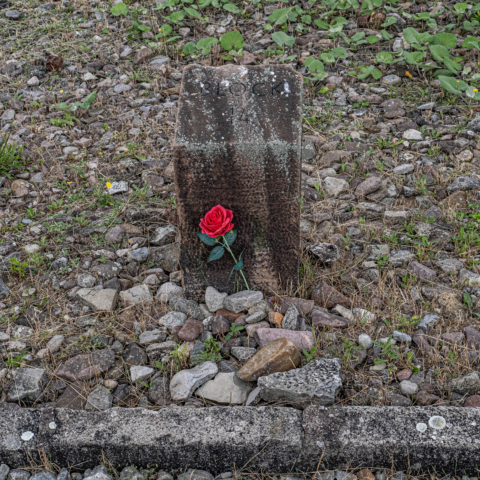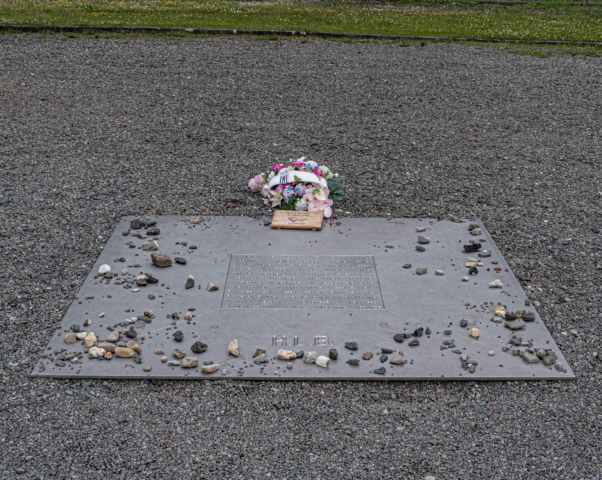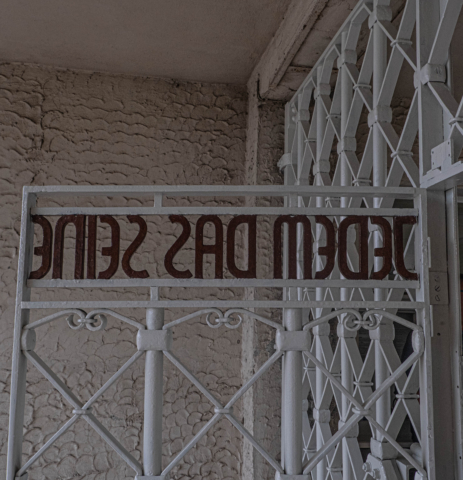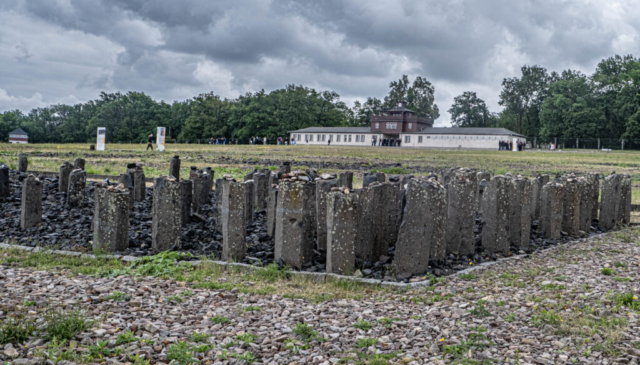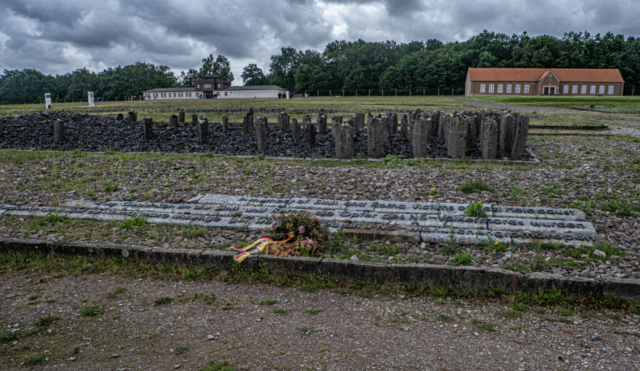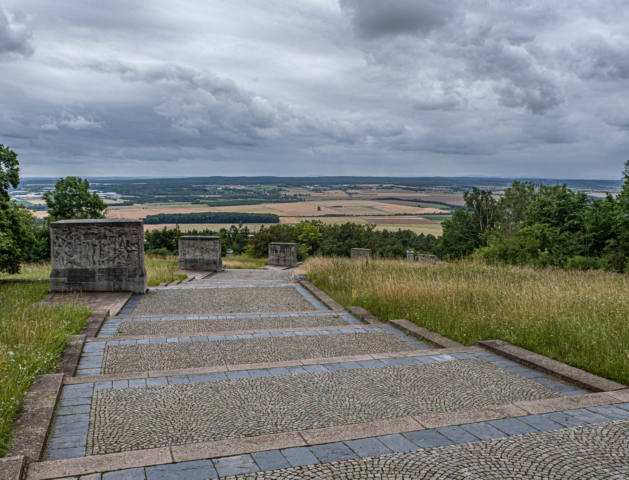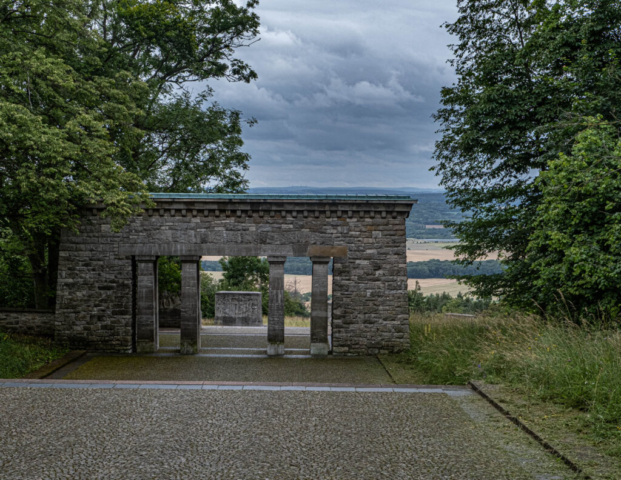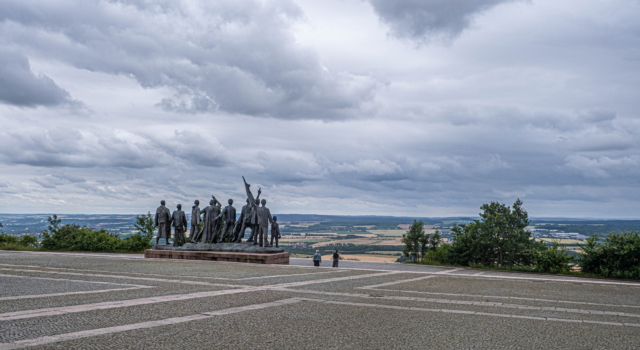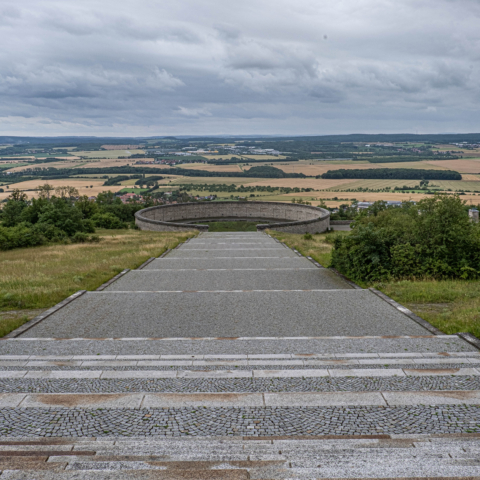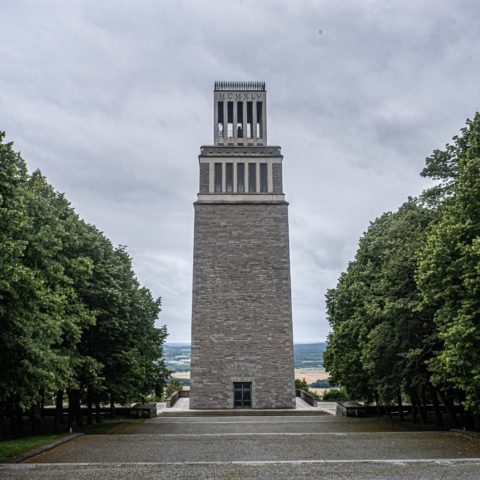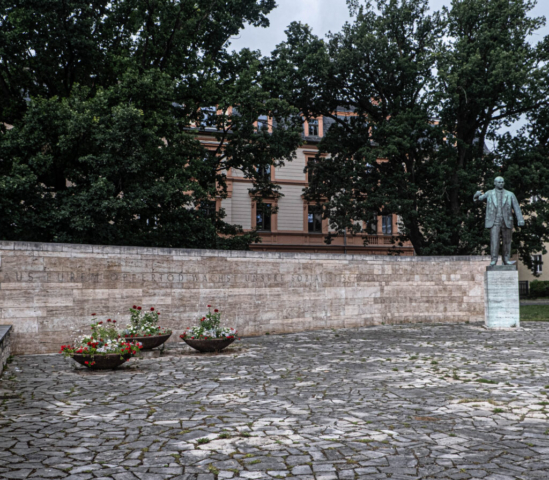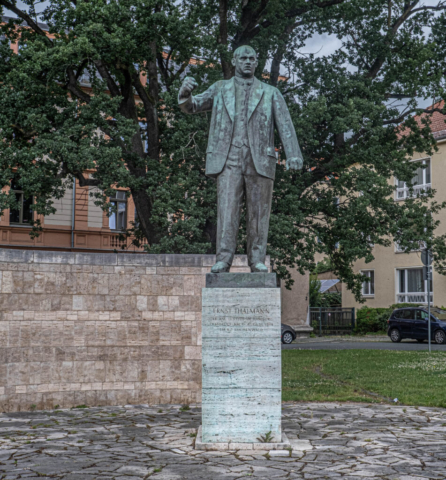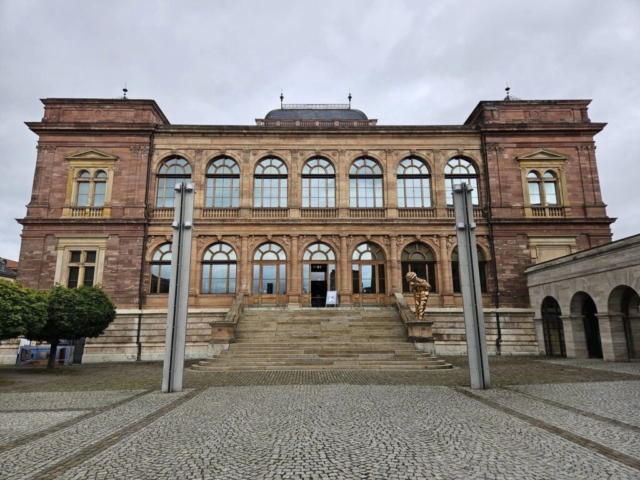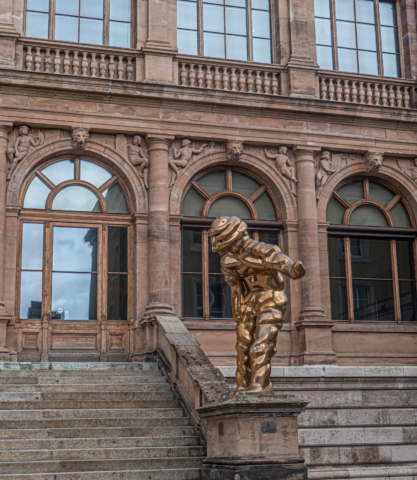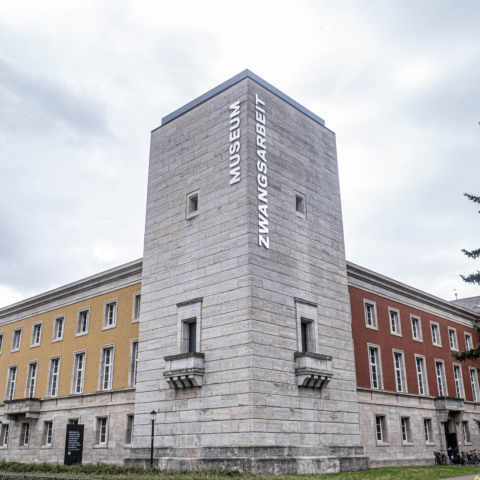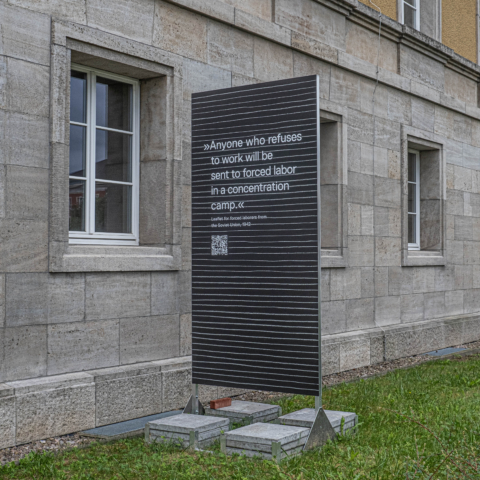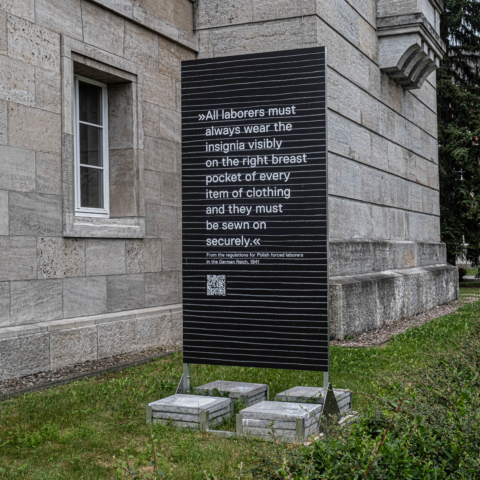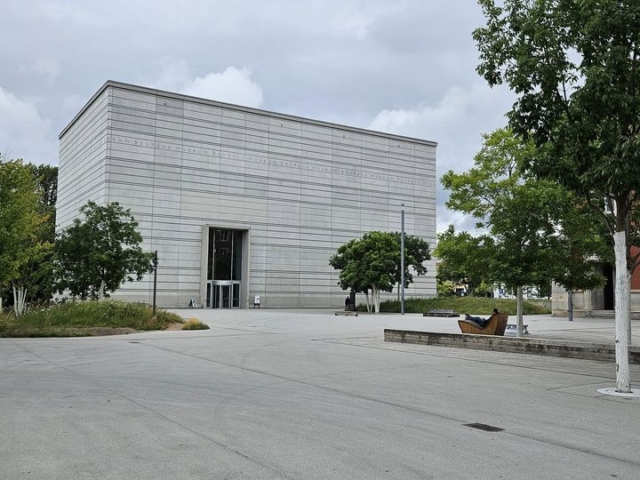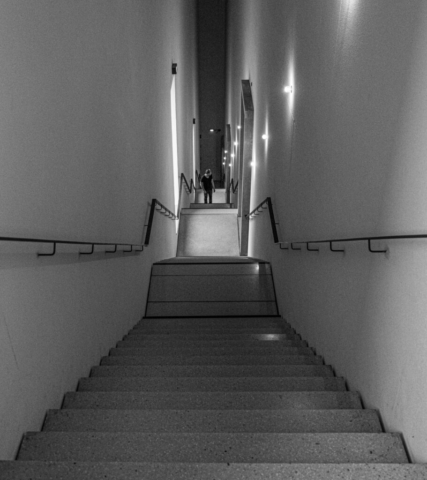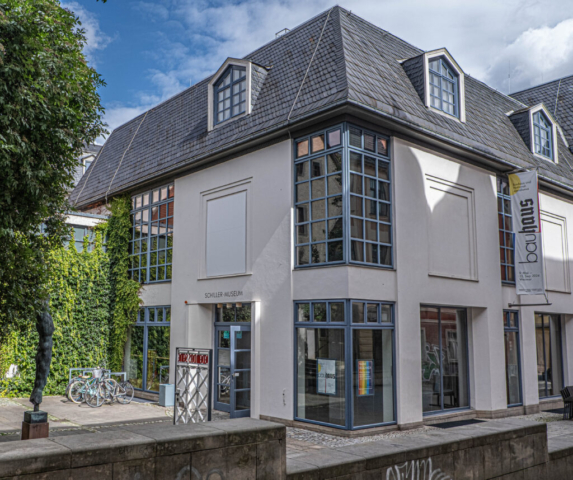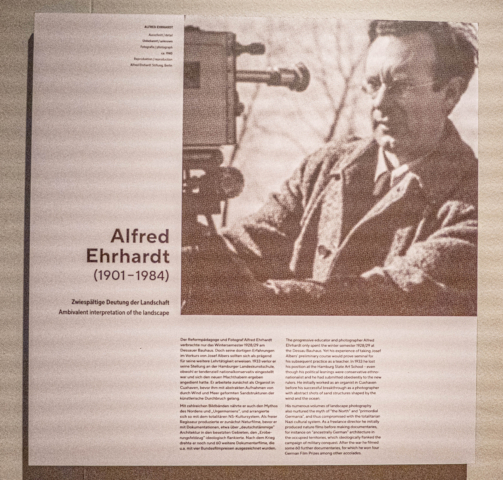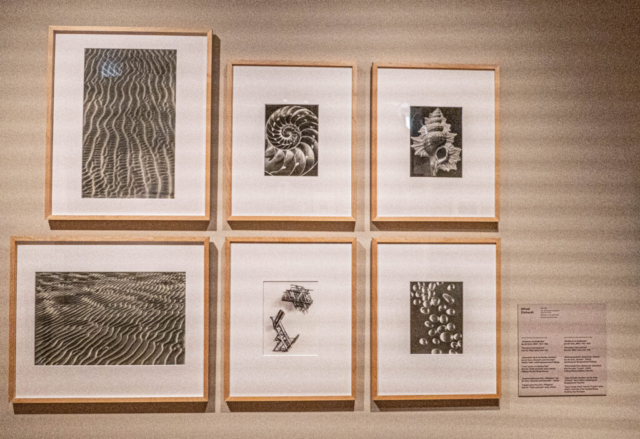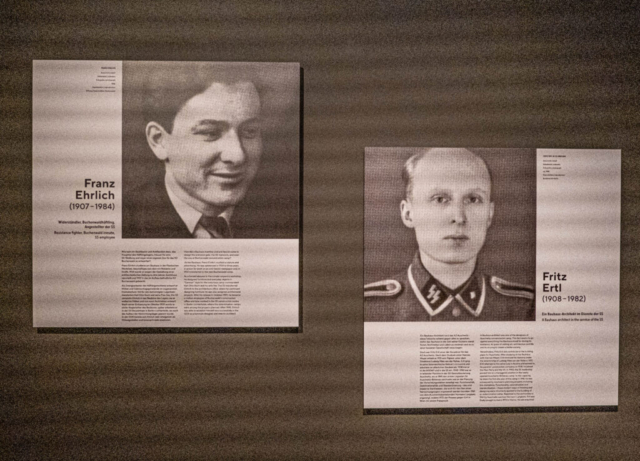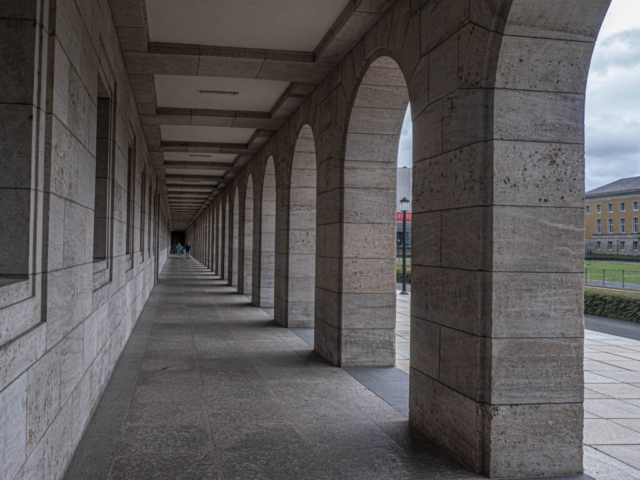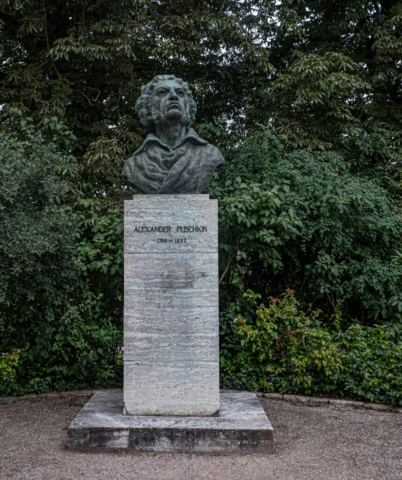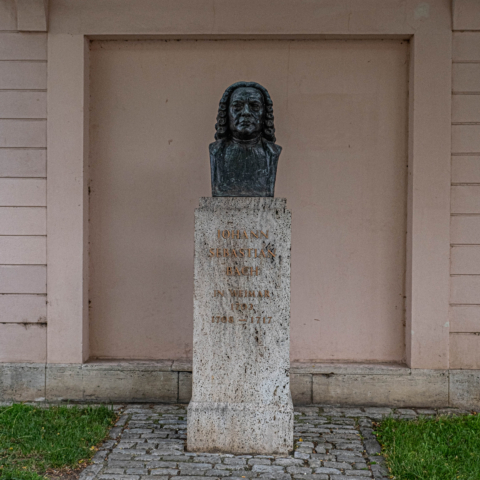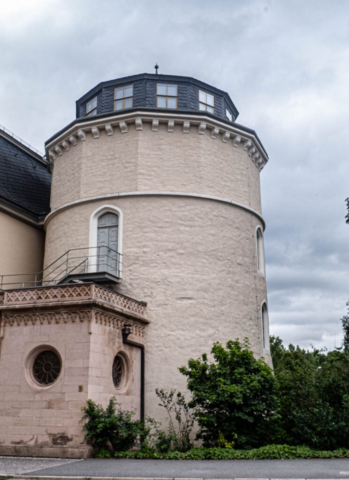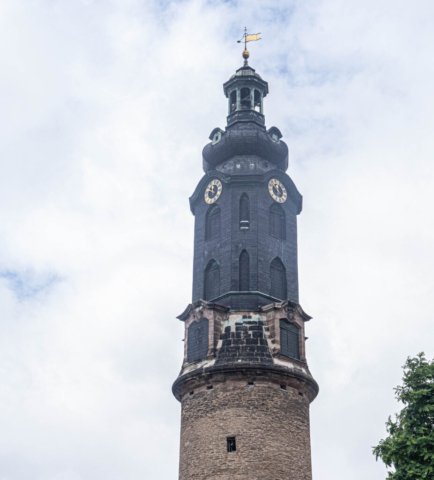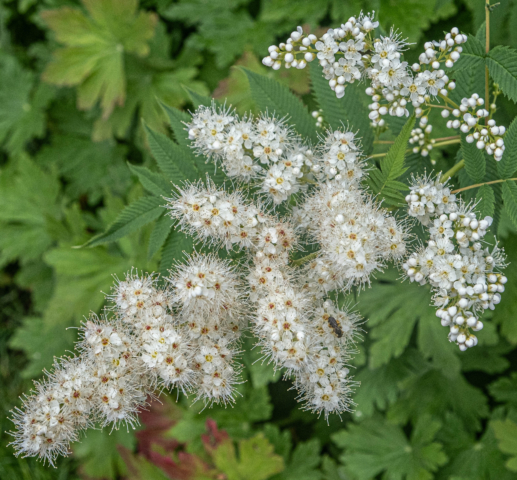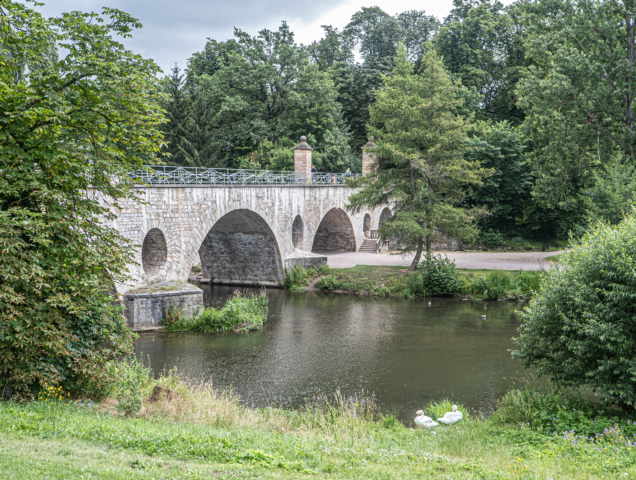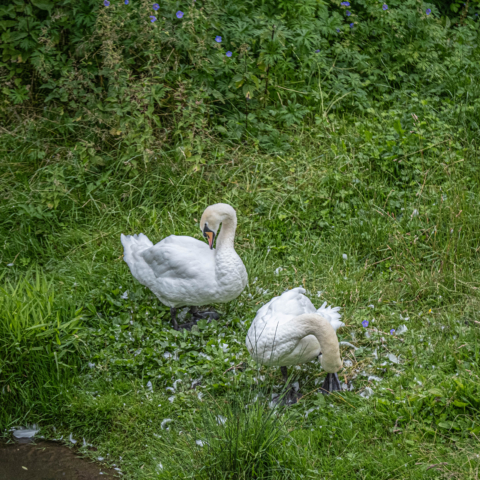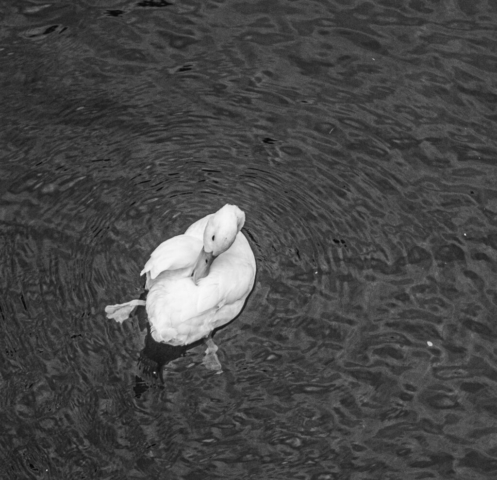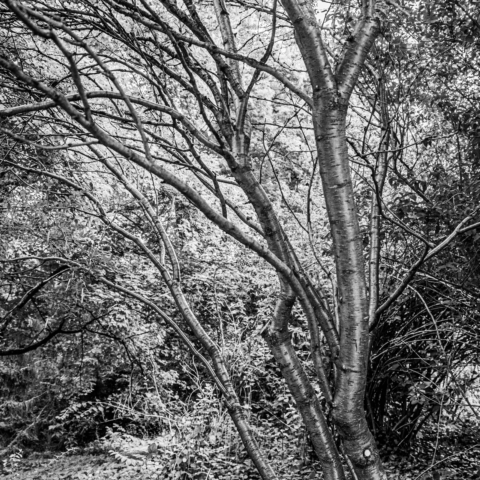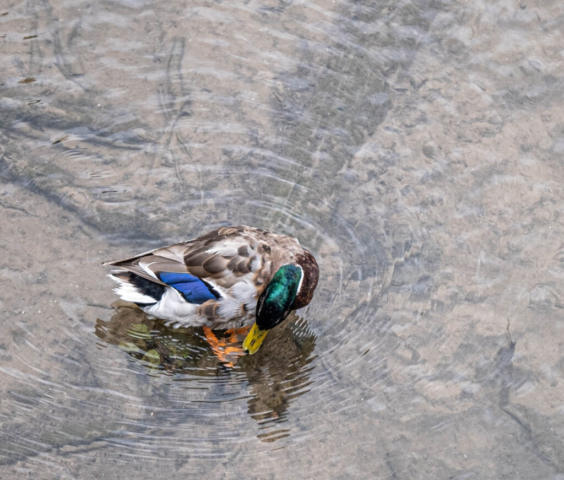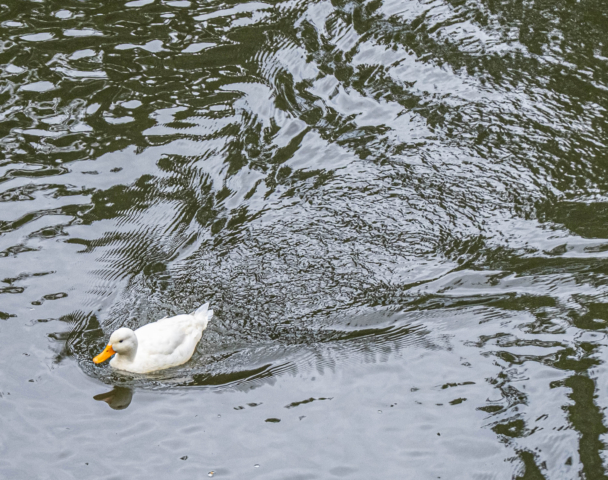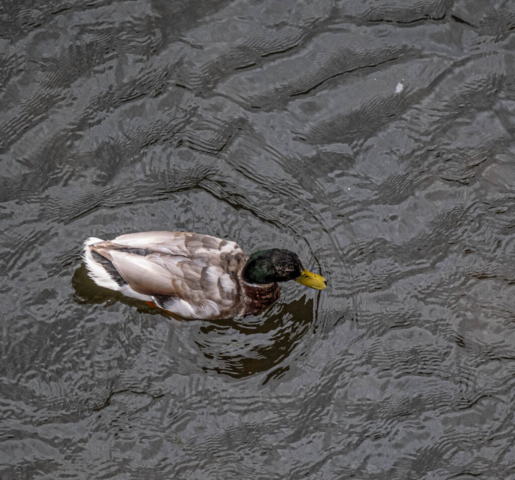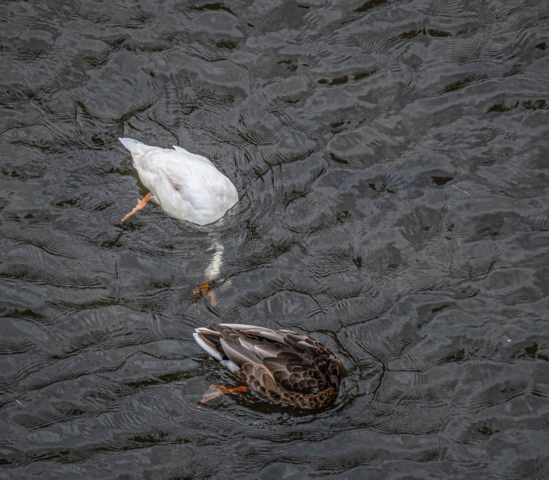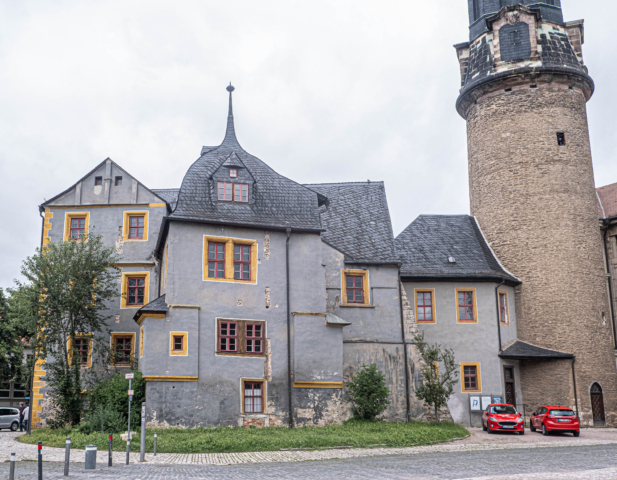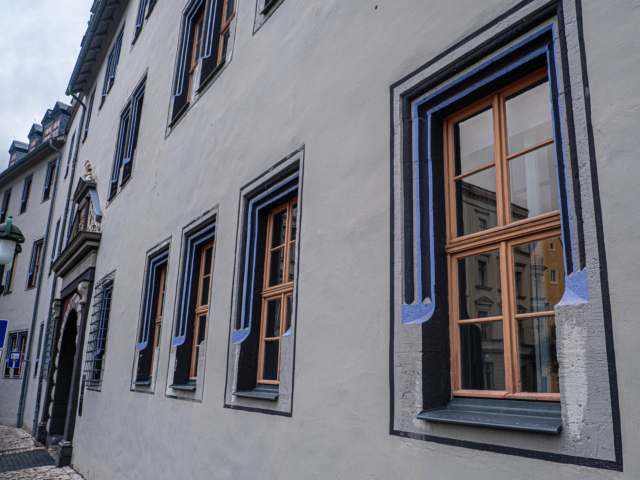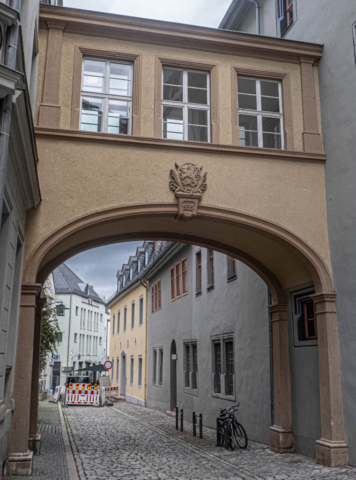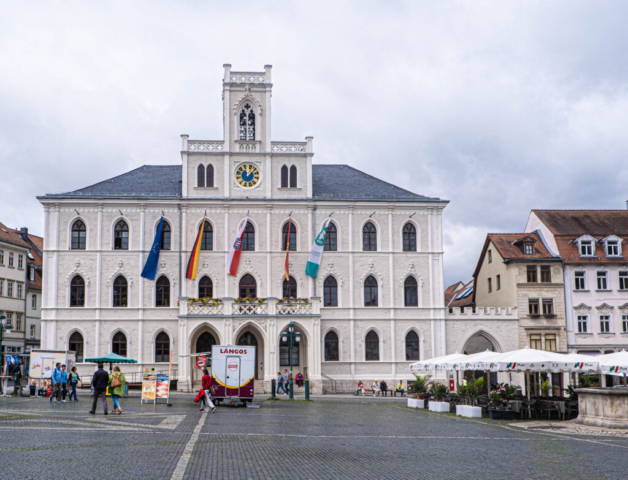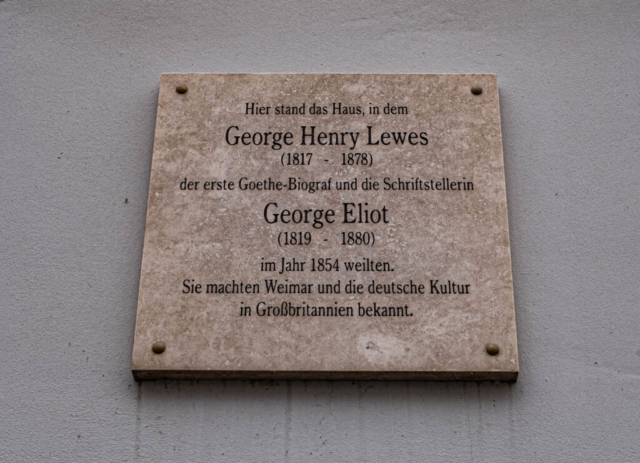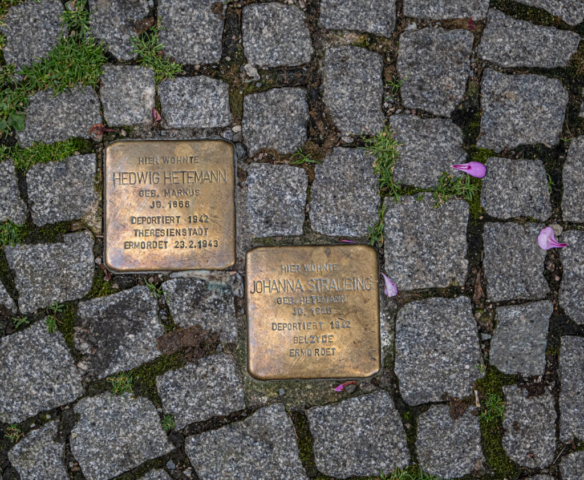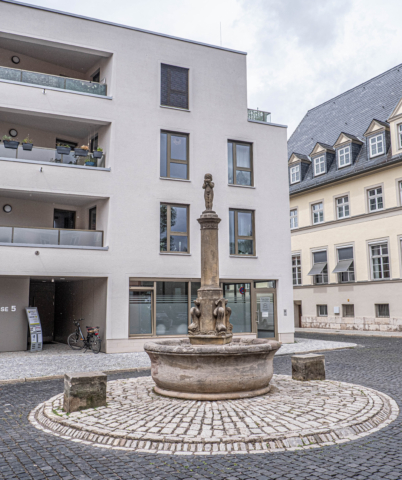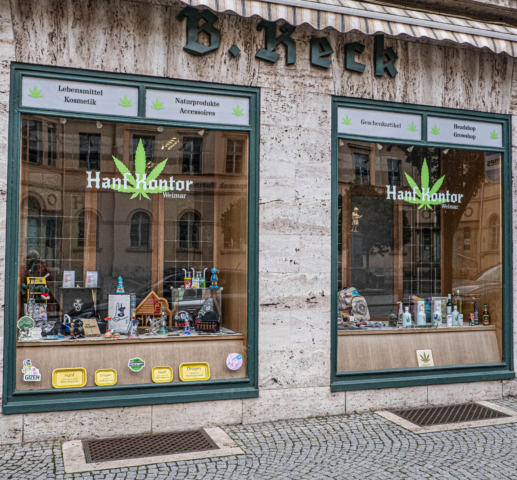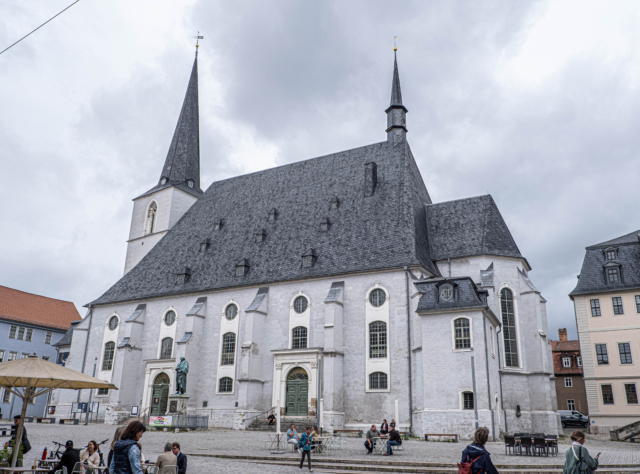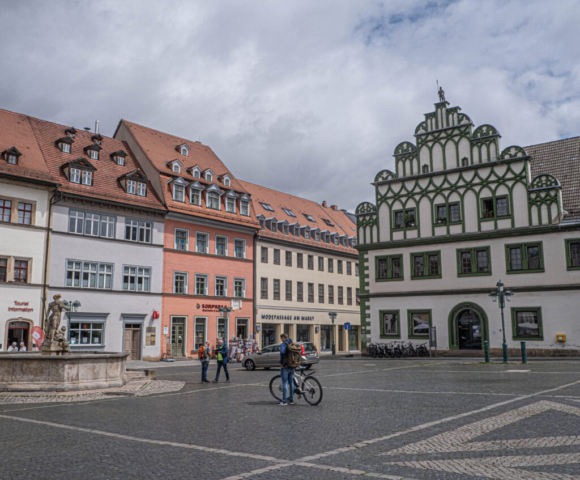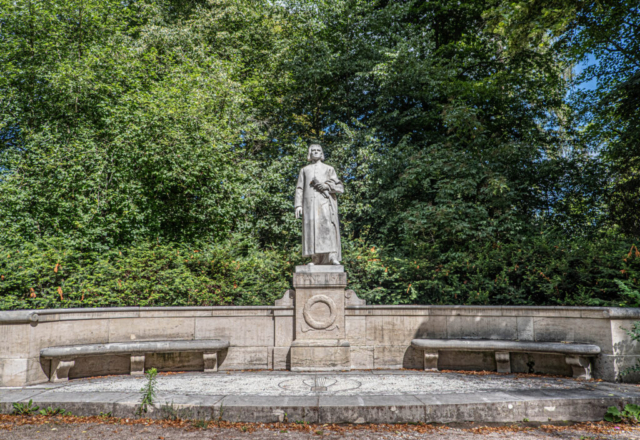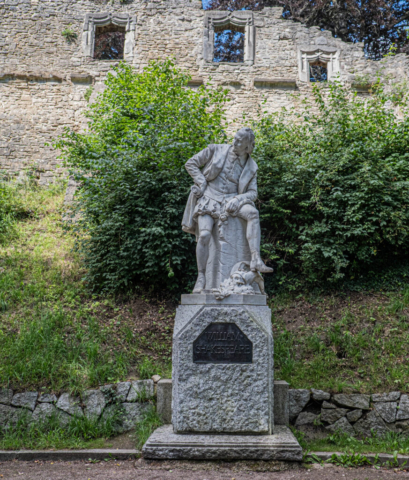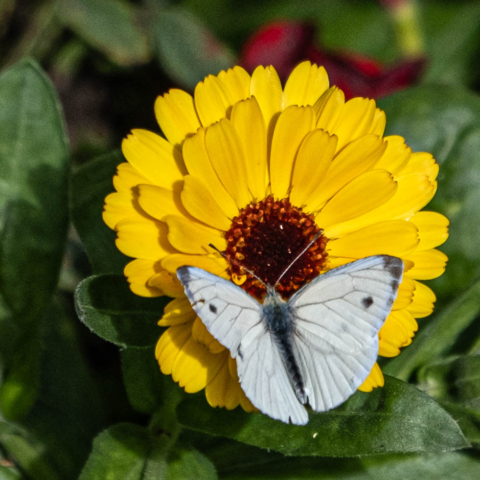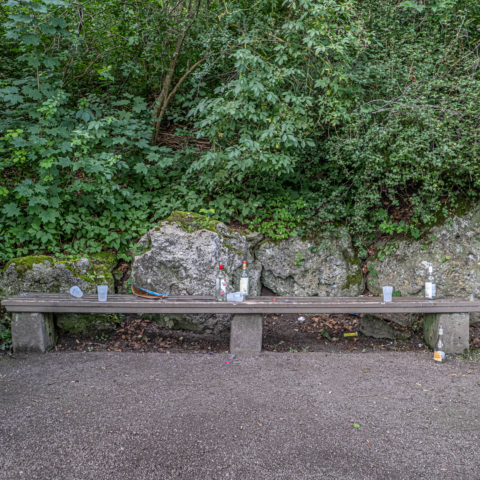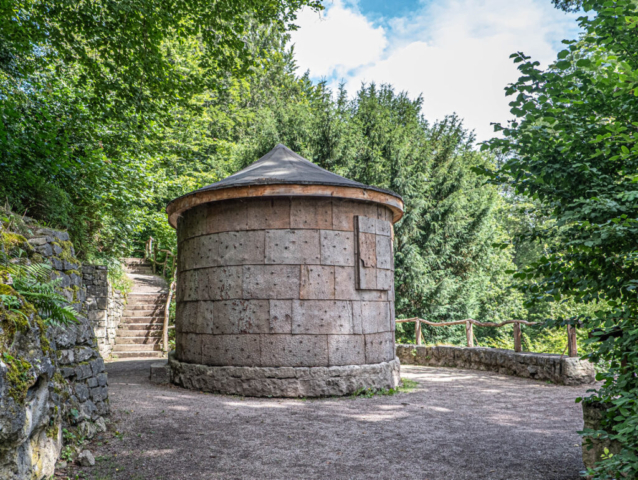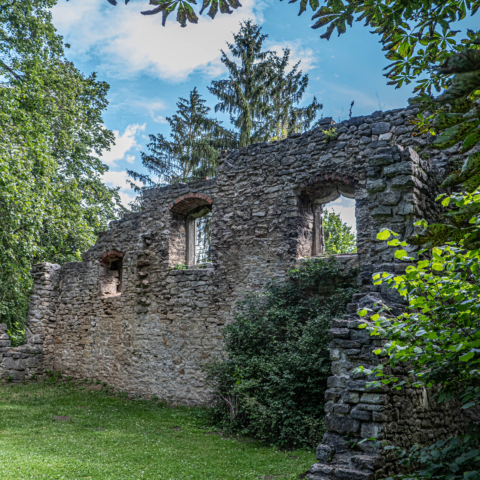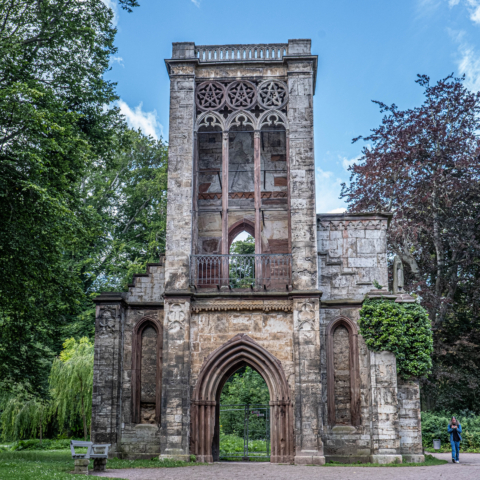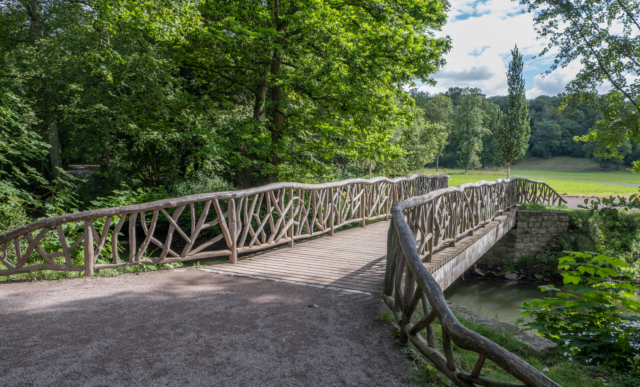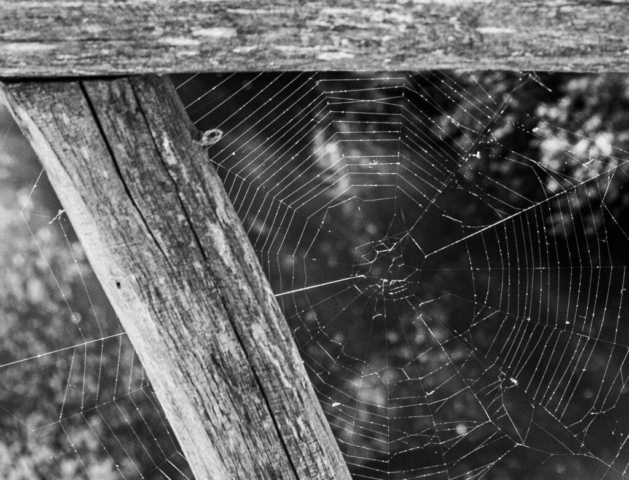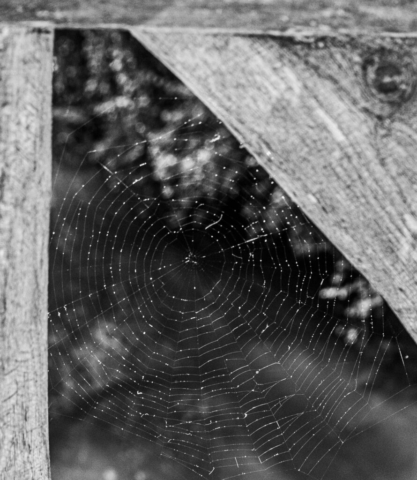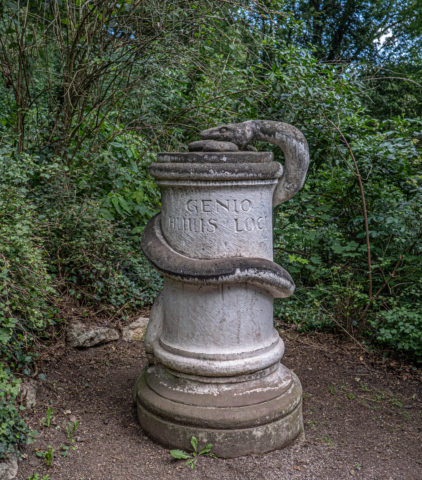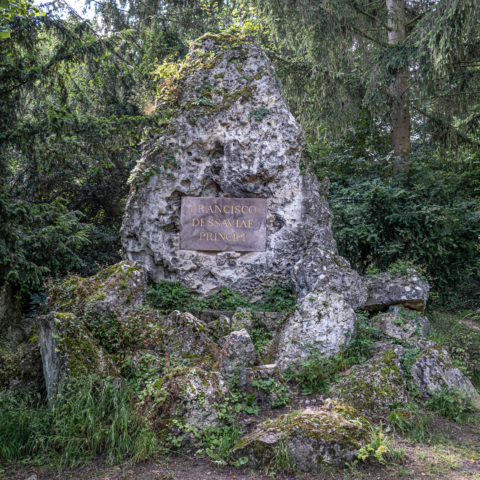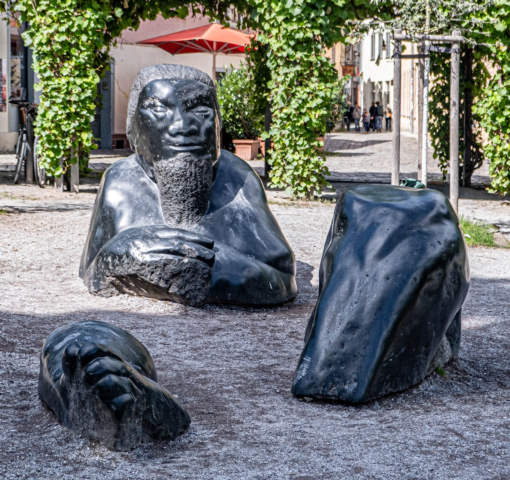Primary purpose: annual meeting of AIACE Deutschland and an opportunity to perhaps connect with old friends and definitey with friends made last year in Dortmund.
Afterwards quick visits to Helgoland and Cuxhaven which have both been on my bucket list for a long time. And to see the sea! The North Sea Wattenmeer is my favourite region in the whole world. And of course an opportunity to reconnect with friends made last year in Dortmund.
I also can’t wait to get away from the neighbours from hell – Cresco Real Estate’s inifinity project with the pompous and ridiculous name of “Victoria zu Berlin” – the world’s ugliest building and longest-lasting renovation project which has basically rendered my balcony unusable for the last seven summers.
Day one: Arrival in Hamburg, welcome reception and dinner
On the ICE on the way there: What the train driver sees. Something I have never seen before: A (lockable) glass door to the driver’s cabin, and my seat was right behind. That must be incredibly annoying for the drivers.
Day two: Bus tour of Hamburg, lunch in a restaurant in the fish market, more bus tour. Evening free.
Great bus tour with an amazing guide. Lunch in Restaurant Elbspeicher on the harbour front.
The first photo is of a converted bunker. Later the oldest semi-detached housing in the world. There is also a bit of experimenting black and white vs colour, and two cases of double exposure.
We also visited the plaza of the Elbphilharmonie. This time, I had more time and opportunity to walk all the way around and take photos (rather than being there for a concert). I tried my hand at some panoramas for a polyptych. I still have a lot to learn in terms of aspect ratio etc., or I could be less ambitious with the number of panels, but I like that format.
And an attempt at a multipanel panorama of Hamburg as seen from a walk around the Plaza of the Elbphilharmonie. I still have a lot to learn in terms of aspect ratio etc., and I guess I could be a litte less ambitious with the number of panels, but I like this format.
Already tired of bland German/northern European food morning, noon and night (less than 48 hours away from my spice rack at home and my local Indian and Vietnamese restaurants :-)), I found two viable alternatives within a very short walk from our hotel in Altona – one Indian and one Vietnamese (Vina Haus, Mendelssohnstraße – don’t seem to have a website), so one for tonight and one for tomorrow night. Mood considerably improved :-).
Day three: AIACE-DE meeting, lunch, and a programme which I shall skip and go to the Henri Cartier-Bresson exhibition in Bucerius Kunstforum instead.
The meeting went according to plan until it did not. I had been wondering how we were supposed to elect people for several posts on the board, a.o. a new chair, without knowing who the candidates were. It turned out that if you belong to “the inner circle”, you know such things, but I do not, and I did not, so the beautiful weather started to draw me outside like a magnet and I figured a long walk for the rest of the day would be a healthier way to spend my time.
I started by walking to the Bucerius Kunstforum to see this amazing exhibition of works by Henri Cartier-Bresson.
I then proceeded to the area by the Elbphilharmonie and along the harbour front to Dockland and from there up some stairs and through a very nice area of Altona with lots of little cafés and restaurants and back to the hotel.
Bonus tip: Near Dockland, on the left side of the street when walking back towards the centre and JUST before the stairs leading to the upper level and Altonaer Balkon ist Café Schmidt with good coffee and delicious-looking cakes. Also, if you need a reward after the treck up the stairs, go left in the direction of the Altonaer Balkon and find a small beer garden called Hafenmeisterei in a very idyllic location.
Day four: Bus tour, lunch, bus tour, and farewell dinner
Guided tour of Hamburg City Hall (in four groups in two buses – very well organised). I skipped that. The weather was too nice and I cannot imagine that it is much less ugly inside than outside.
Afterwards a lovely two-hour harbour cruise. Always nice to be on water. I love Hamburg’s maritime flair, which my overdose of photos illustrate (but oddly enough, Berlin still feels more like home). The two megayachts in the drydock are the Ali Baba and the Luna.
And finally, a buffet dinner and the end of another very well organised annual meeting.

